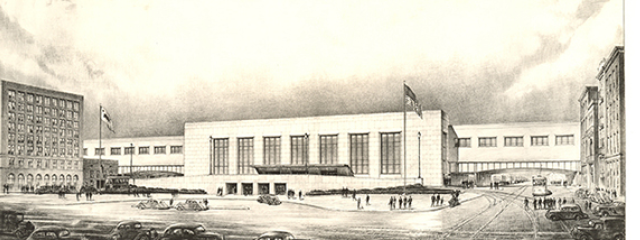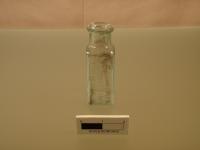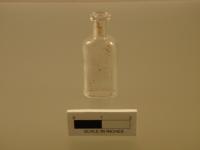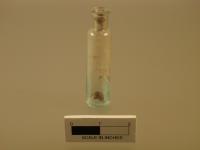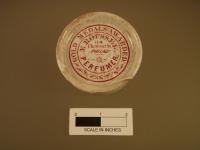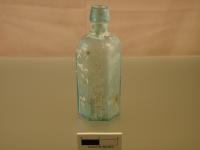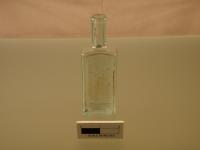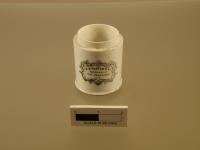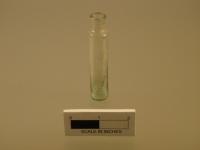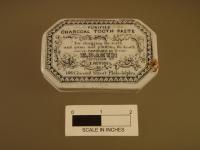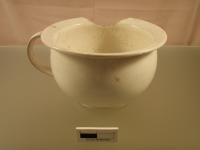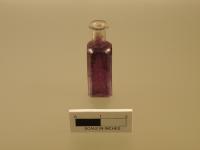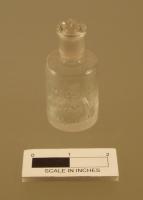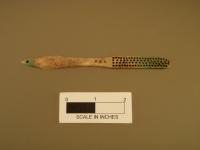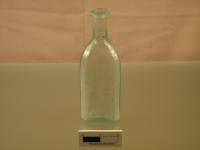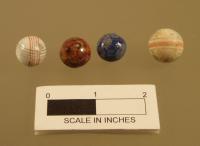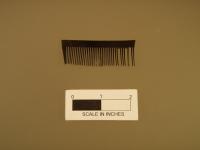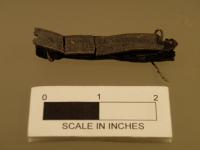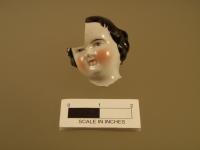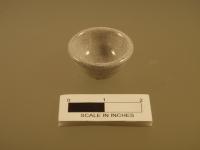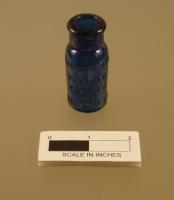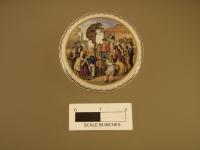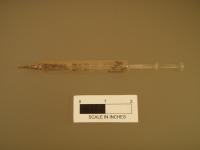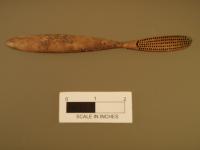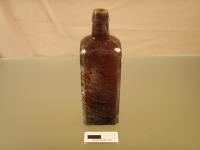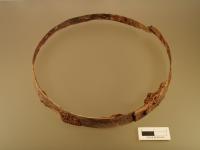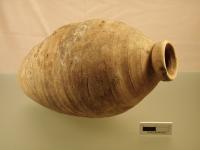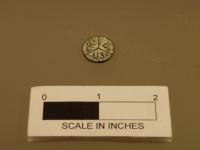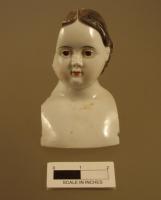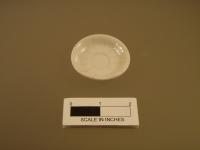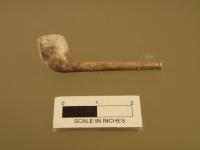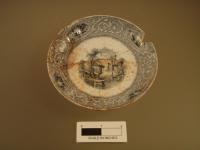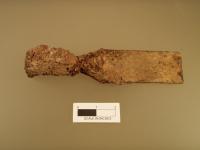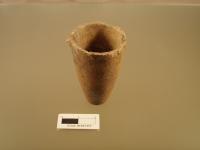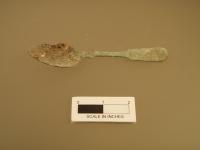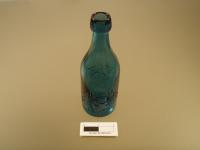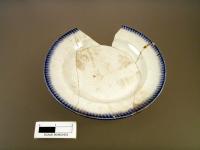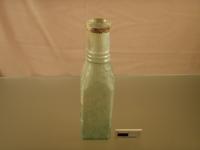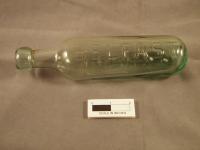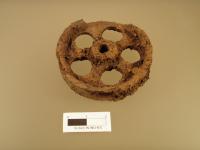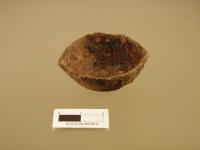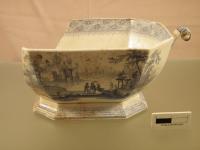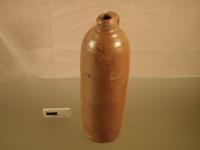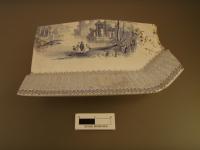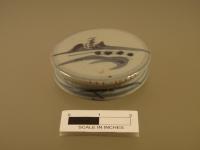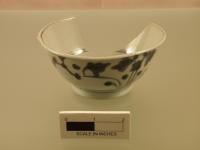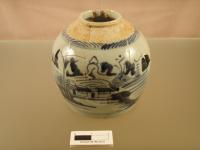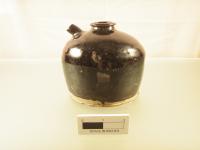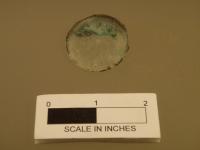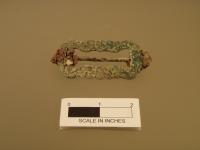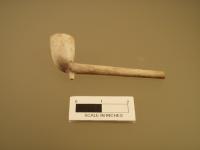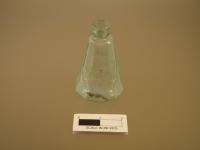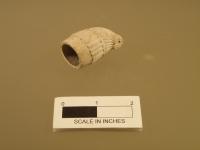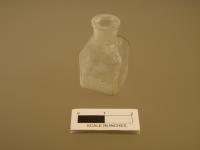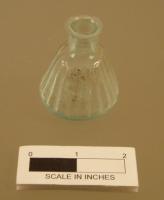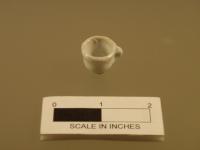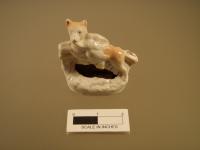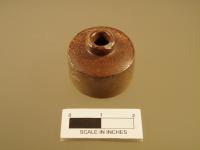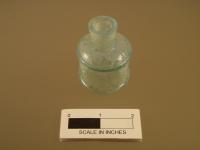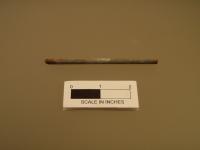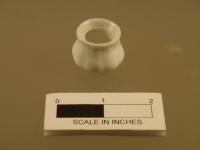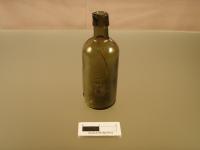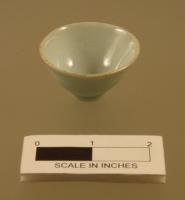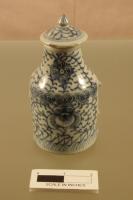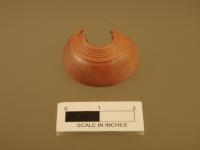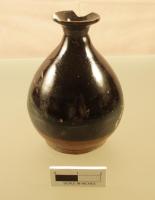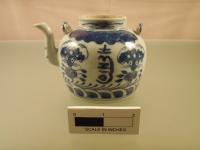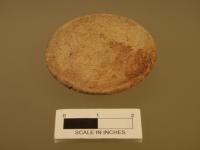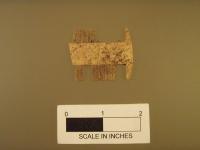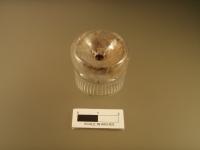Economic Historic Preservation
Preservation Design Award for Outstanding Achievement in the field of Historic Preservation
The Transbay archaeology exhibit developed by the Transbay Joint Powers Authority (TJPA) was recognized by the California Preservation Foundation in 2012 with the Preservation Design Award for Outstanding Achievement in the field of Historic Preservation.
Since its inception in 2011, the exhibit has been hosted by several TJPA transit partners and others, allowing members of the public throughout the Bay Area to view the exhibit’s artifacts and accompanying banners which feature historic context. After initially opening in the lobby of TJPA’s office at 201 Mission Street in San Francisco in December 2011, the exhibit moved to the lobby of the Metropolitan Transportation Commission from April to June 2012; the Alameda–Contra Costa Transit District (AC Transit) headquarters from June to October 2012; and then Caltrans District 4 headquarters from October 2012 to March 2013. The exhibit is now in the lobby of the TJPA office located in the Salesforce Transit Center at 425 Mission Street in San Francisco.
The exhibit features a variety of items discovered within the footprint of the project site that illuminate the rich history of San Francisco’s gold rush era. Recovered artifacts show the way 19th century residents of the South of Market neighborhood lived, worked and played, including industrial tools, household items and remnants of neighborhood businesses.
Excavation of the Transbay Transit Center site also uncovered a Columbian Mammoth tooth estimated to be approximately 11,000 years old. The tooth was donated to the California Academy of Sciences where it is currently on display. For more information on the tooth and California Academy of Sciences, exhibit click here: California Academy of Sciences Mammoth Tooth Update.
More Information
For more information on the Transbay archaeology exhibit, watch the Board Presentation and download informational PDFs here:
Archaeology Slideshow

A Glimpse of the Past, a Vision for the Future
ARCHAEOLOGY ALBUM: Glimpse of the Past, a Vision for the Future
Learn more about the artifacts with samples from the exhibit.
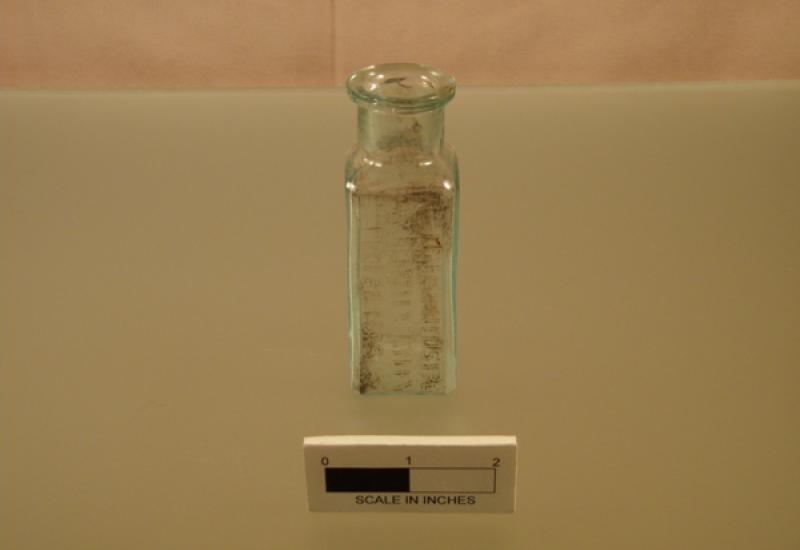
Royal Parisian Lustre
This “shoe dressing” appears to have been produced only in 1888 and 1889 by the Royal Parisian Lustre Co-operative Manufacturing Company at 410 Sansome Street. The company president was G. B. Bailey and its secretary was Albert G. Daw-Kerrell. Short-lived products such as this one help archaeologists to work out when the feature where they were found was filled in, such as the privy at 38 Natoma Street that contained this bottle.
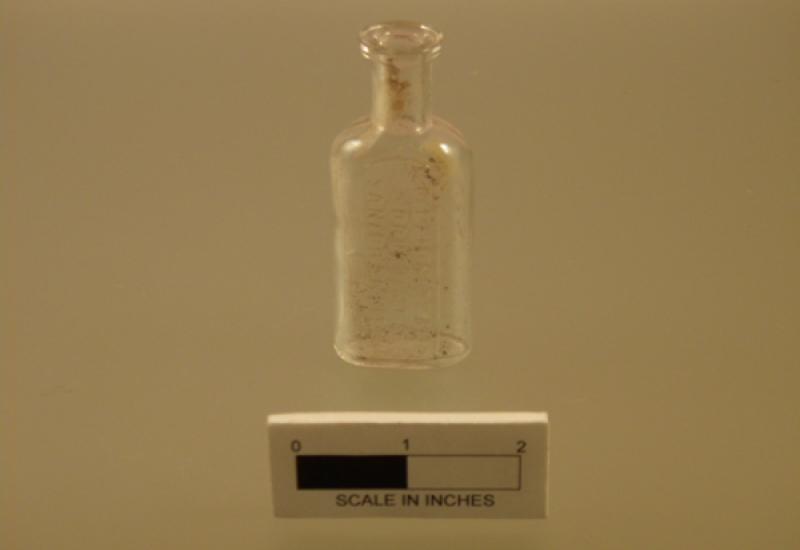
Medicinal Bottle
Gustave Liepnitz was born in Saxony around 1815, and by 1856 he had established himself as an apothecary in San Francisco. In 1873, together with Max Tschirner, he established G. Leipnitz & Co., apothecaries at 419 Bush Street. In 1879, they relocated to 236 Sutter Street, and the company was still in business at the time of the 1906 earthquake. This bottle was made by Whitall Tatum & Co., a popular bottle-making company during the late 19th century. It was recovered from 40 Natoma Street.
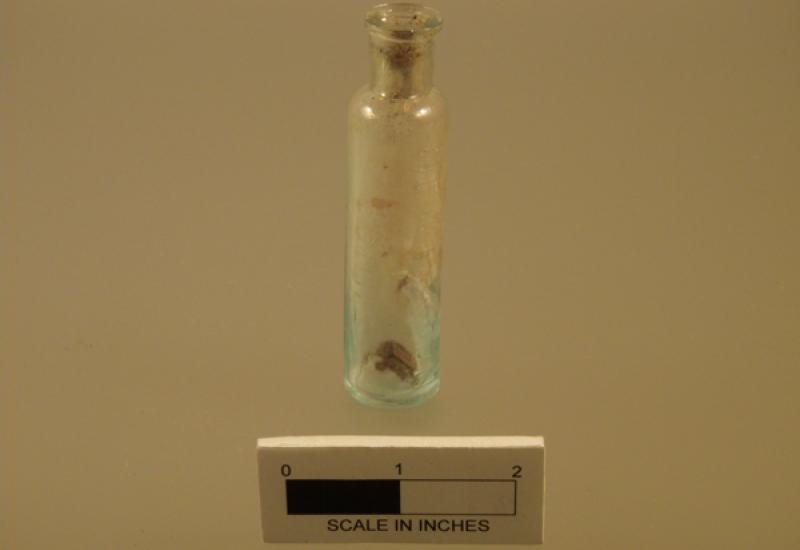
Dr. Thompson's Eye Water
This medicine was first made in 1795 by Dr. Isaac Thompson of Connecticut for the relief of sore eyes. The family kept the company name going and produced this product through the 1800s. This vial was found in an outhouse in the backyard of 40 Natoma Street.
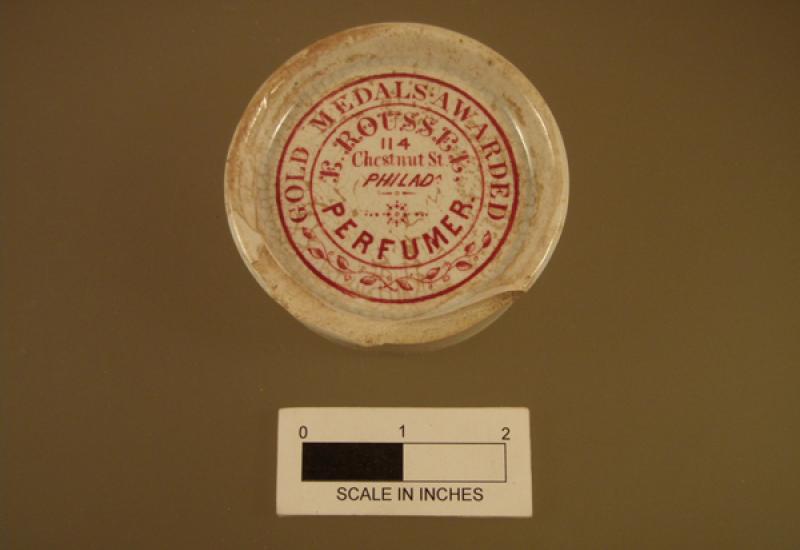
Apothecary Jars & Lids
These types of jars were commonly used in 19th-century homes in San Francisco. They were used for cosmetics and hygiene products of all types including toothpastes, shaving creams, cold creams, hair pomades, and ointments. The more elaborately decorated jars were sometimes reused for other purposes. These samples include a jar that contained one of the products offered by B. B. Thayer & Co., a San Francisco apothecary, as well as perfume from E. Roussel of 114 Chestnut Street in Philadelphia. Colorful lids like the one depicting a scene from a circus were produced after 1850 and were special-ordered by drug and cosmetic companies for their products. These samples were found in the backyards of 40 Natoma, 42 Natoma, and 45 Minna streets.
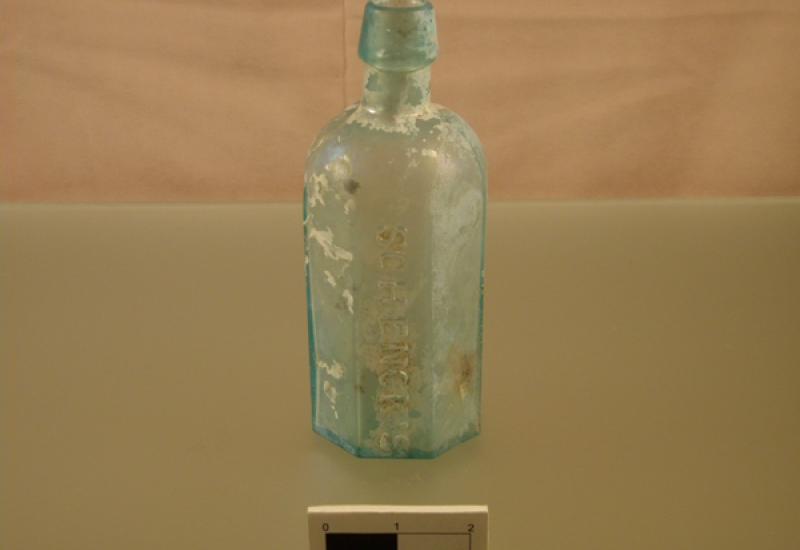
Schenck's Pulmonic Syrup
This product was first produced by Joseph H. Schenck in 1836 in Philadelphia. According to an article in the New York Times published April 10, 1865, \"This Syrup will search through every blood vessel, equalizing the circulation, preventing hemorrhage, separating the bile from the blood, making it healthy and the circulation natural [although] it is not denied that some who take Schenck\'s Pulmonic Syrup die also.\" This bottle was found in the backyard of 40 Natoma Street.
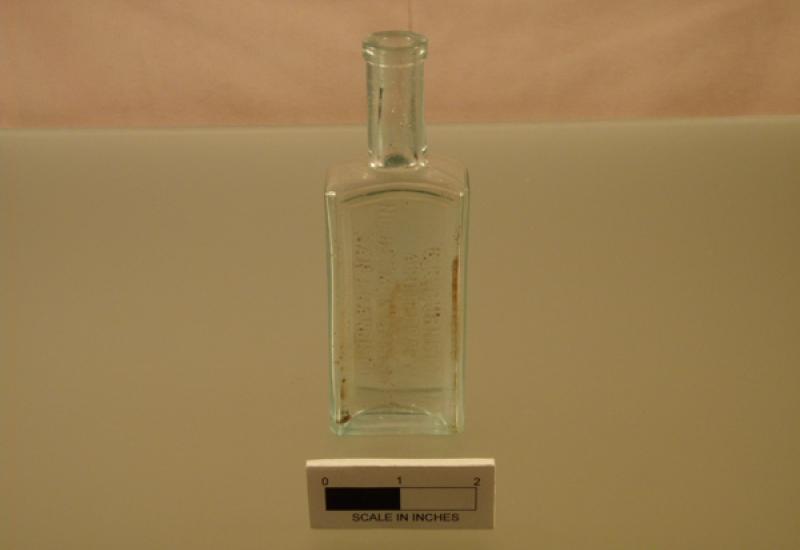
Dr. Rowell's Fire of Life
Dr. Isaac Rowell and his son Charles practiced chemistry and medicine together in San Francisco. Charles trademarked Dr. Rowell’s Fire of Life by 1875 and it was sold by the Burnett & Company apothecary house until 1897. This bottle was found in an outhouse in the backyard of 40 Natoma Street.
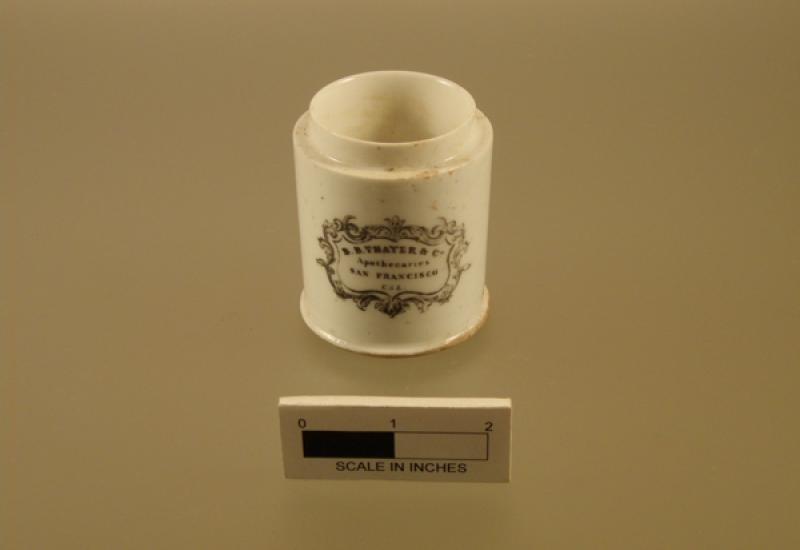
Apothecary Jars & Lids
These types of jars were commonly used in 19th-century homes in San Francisco. They were used for cosmetics and hygiene products of all types including toothpastes, shaving creams, cold creams, hair pomades, and ointments. The more elaborately decorated jars were sometimes reused for other purposes. These samples include a jar that contained one of the products offered by B. B. Thayer & Co., a San Francisco apothecary, as well as perfume from E. Roussel of 114 Chestnut Street in Philadelphia. Colorful lids like the one depicting a scene from a circus were produced after 1850 and were special-ordered by drug and cosmetic companies for their products. These samples were found in the backyards of 40 Natoma, 42 Natoma, and 45 Minna streets.
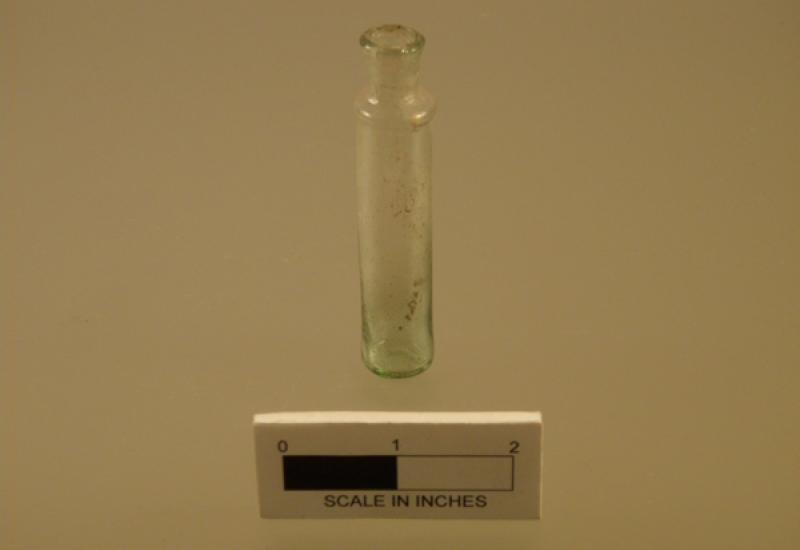
Medicinal Vial
Small vials like this one were used to hold homeopathic medicines, which became increasingly popular in San Francisco in the second half of the 1800\'s. This particular bottle was likely made between 1850 and 1870 based on its distinct mode of manufacture. It was found in the backyard of 40 Natoma Street.
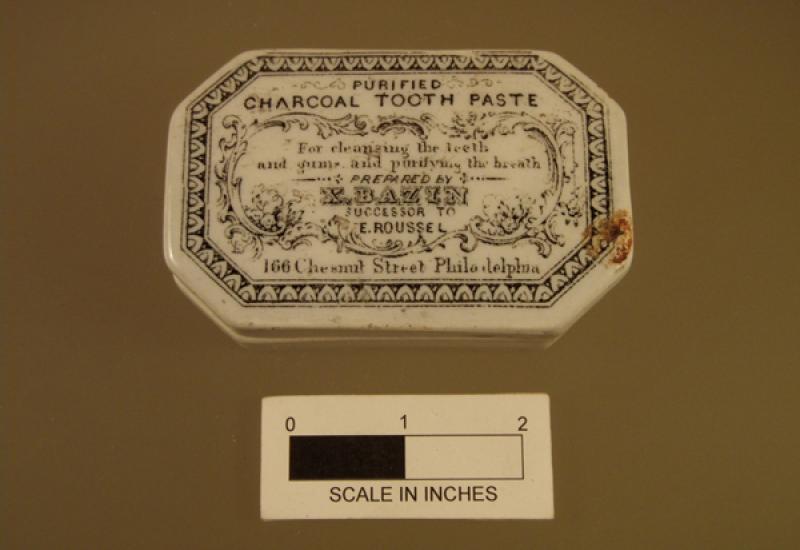
Charcoal Toothpaste Box
Xavier Bazin was a successful businessman who began producing perfumes and cosmetics in the 1850s in Philadelphia. His most popular item was a shaving cream that won a medal at the World\'s Fair in London in 1851. Bazin, his two sons, and a business partner named Sargent produced products like these until 1887. This sample was found in the backyard of 40 Natoma Street.
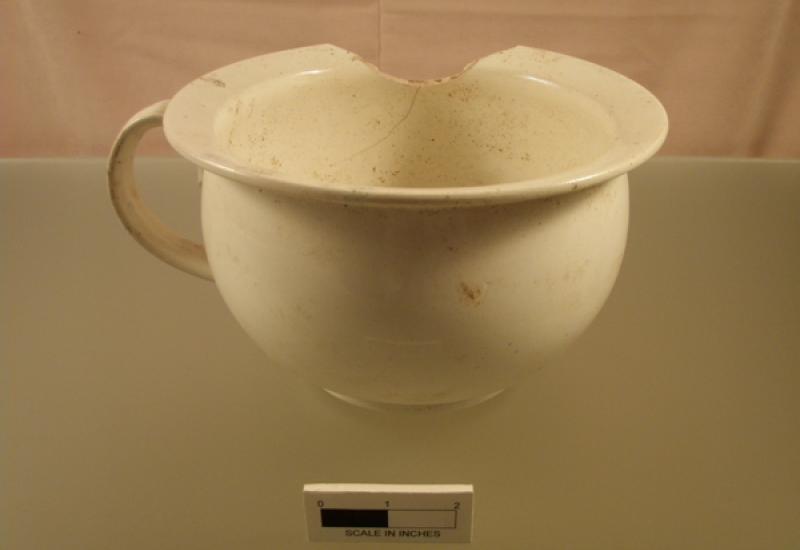
Chamber Pot
This is one piece of a full toiletry set that would have included a wash basin, pitcher, shaving mug, shaving brush vase, hot water pitcher, soap dish, cover and drainer, as well as the chamber pot and cover. Sears sold whole sets for $2.25 in 1897. This piece was found in the backyard of 40 Natoma Street.
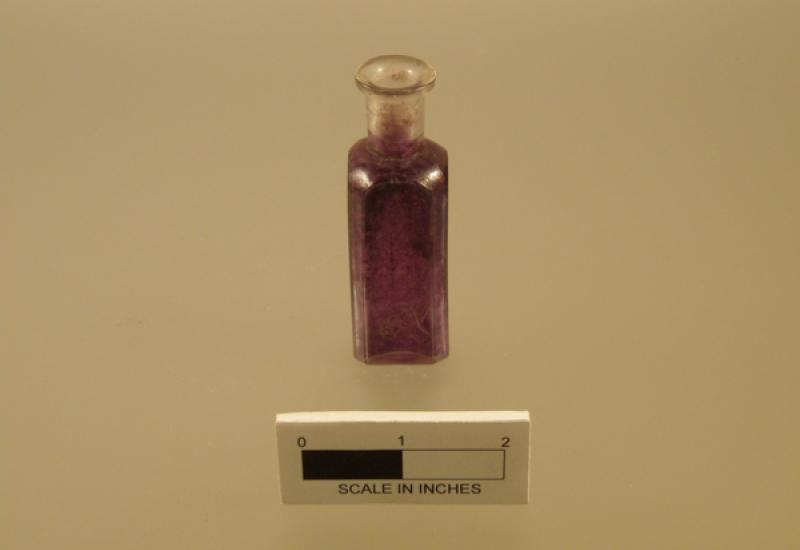
Medicinal Bottle
C. Roethe was the proprietor of a San Francisco drug store from the mid 1800s until he died in 1886. This bottle was found in the outhouse behind 40 Natoma Street.
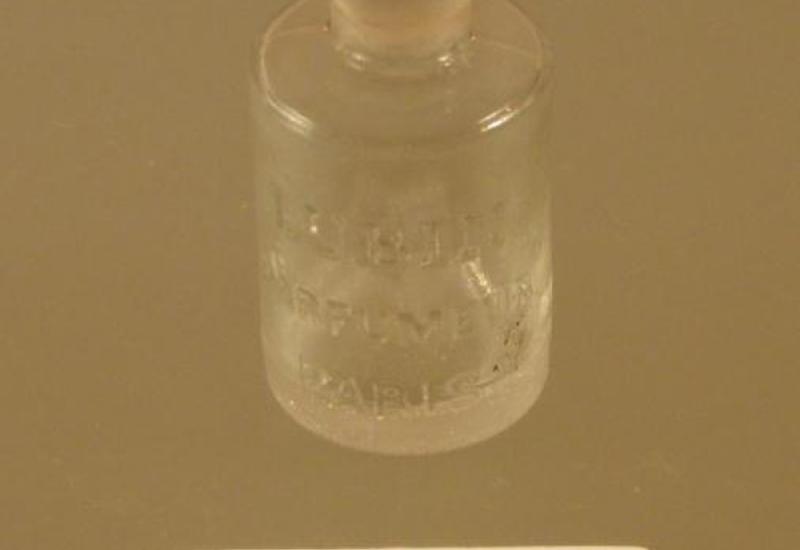
Lubin Parfumeur
Pierre François Lubin established his perfume house in Paris in 1798. Lubin became world-renowned due to the patronage of, among others, the Empress Josephine Boneparte and the crowned heads of Europe. He began to sell his perfumes in the United States in 1830. His most famous creation was “Eau Vivifante,” which was later renamed “Eau de Lubin.” This bottle was found in the backyard of 45 Minna Street.
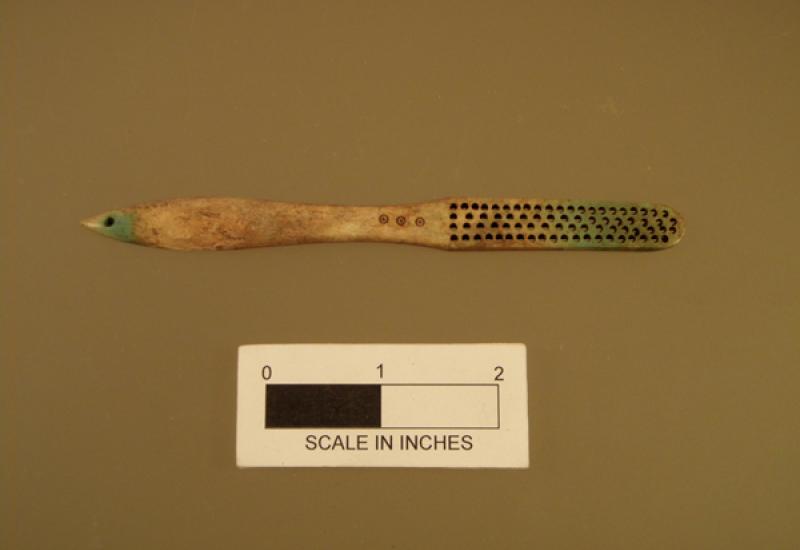
Bone Toothbrushes
Animal bone toothbrushes were commonly used during the second half of the 19th century. They ranged from plain to elaborately incised and decorated. These examples were found at 40 Natoma and 45 Minna streets.
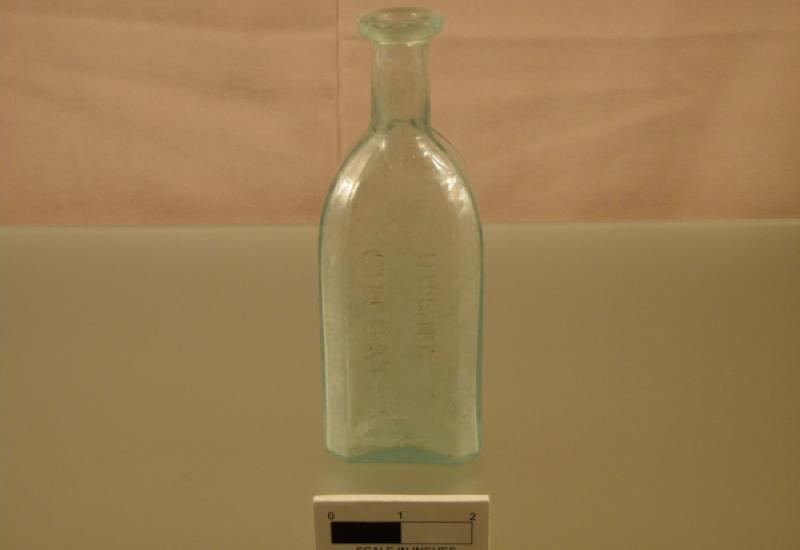
Burnett’s Cocoaine
Burnett’s Cocoaine was a very popular product made after 1857 in Boston, Massachusetts, and was hailed as \"A perfect hair dressing” and “A promoter of the growth of hair.\" This bottle was found in the backyard of 45 Minna Street.
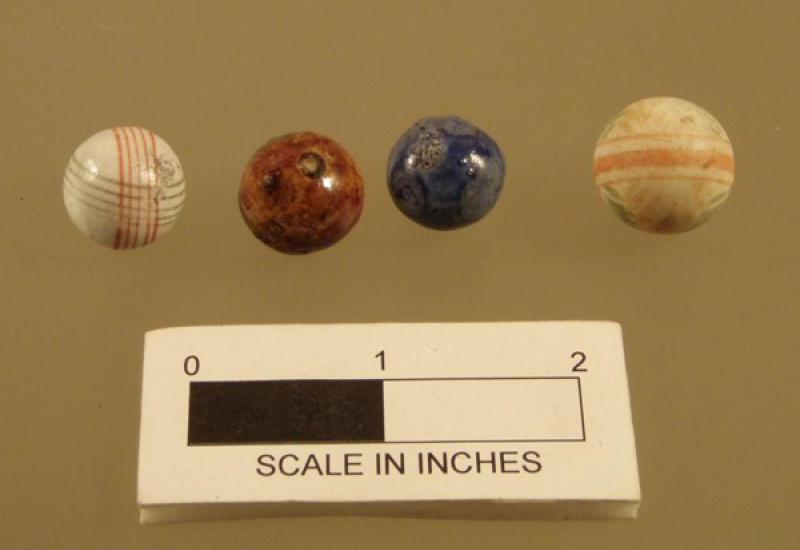
Marbles
Marbles are very commonly found in the archaeological deposits of Victorian-era San Francisco. They were easy and cheap to make and fun for children, so it is no wonder that these toys were so popular. These marbles include samples that were both hand-painted and glazed. They were recovered from the backyards of 40 Natoma, 41 Minna, and 45 Minna streets.
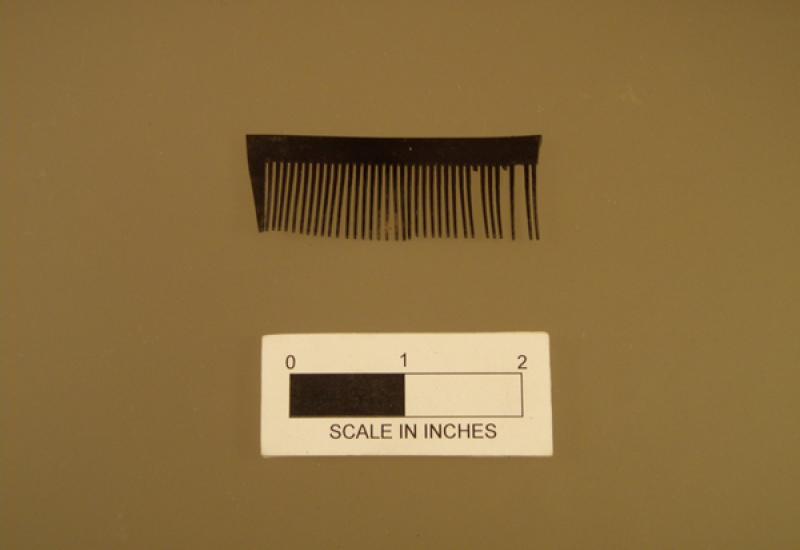
Rubber Comb
The process for making these black rubber combs was discovered in the mid-19th century, and they quickly became very popular. They ranged from the relatively simple to the decoratively molded. This comb was found at 41 Minna Street.
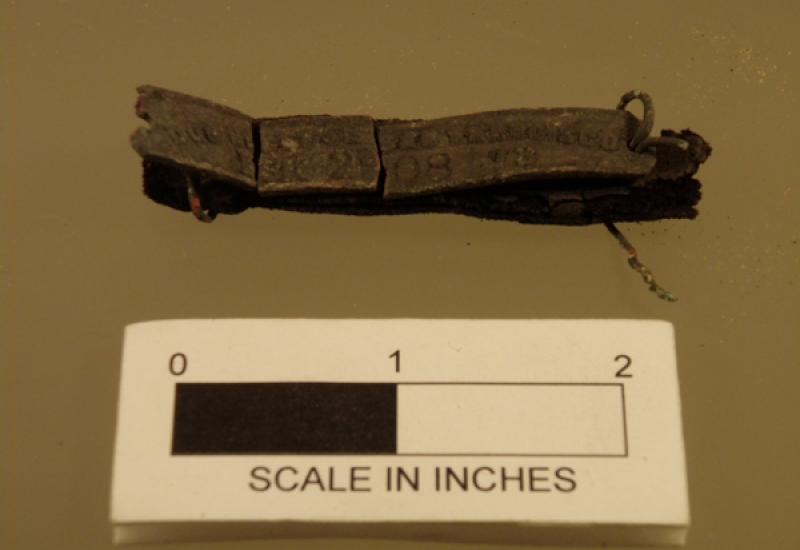
Dog Collar
Leather dog collar with a copper license attached that reads \"Dog License San Francisco 18 2908 78.\" This was found at 41 Minna Street, near the home of the Donahue family from 1865-1901. The Donahues had two family dogs, a Skye terrier named Fred Funston and a St. Bernard named Henry Martin.
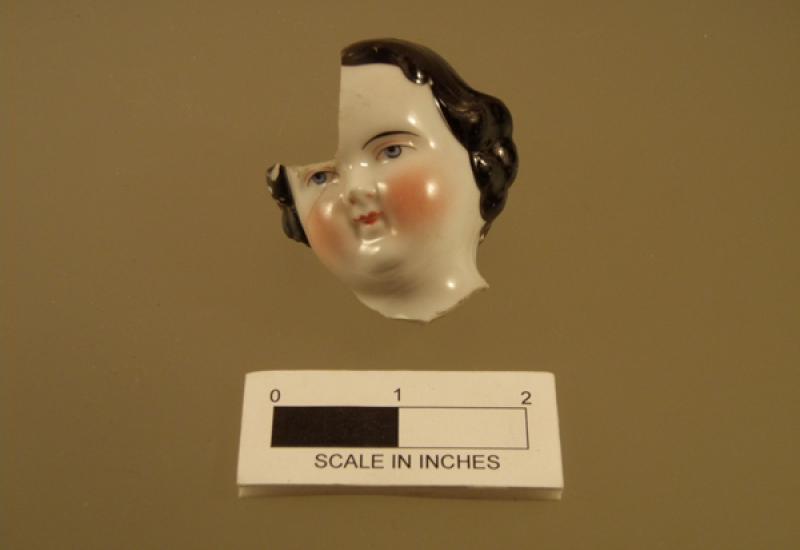
Porcelain Dolls
These hand-painted porcelain dolls were jointed, and their limbs and head were joined to a cloth, leather or ceramic body by stitching, wiring or elastic banding. The dolls’ hairstyles reflect the changing fashions of the 19th century. These dolls were likely made between the 1840s and the 1880s and were found in the backyards of 40 Natoma and 45 Minna streets.
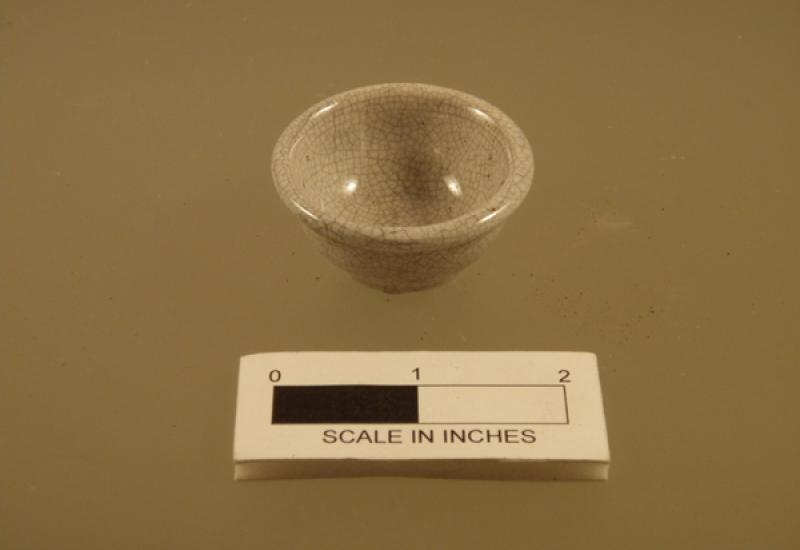
Children’s Tableware
This saucer, teacup, and sugar bowl were part of children’s tea sets. A whole set would usually have included a sugar bowl and cover, a teapot, several cups and saucers, and sometimes a creamer. In the late 19th century the price for these small sets was anywhere from 10 cents for the simple undecorated pieces to as much as $1.75 for the elegantly patterned pieces. While salesmen did go door to door with small scale versions of tableware to show potential customers, the small undecorated bowl was also likely used as a toy. These pieces were found in the backyards of 40 Natoma and 41, 43, and 45 Minna streets.
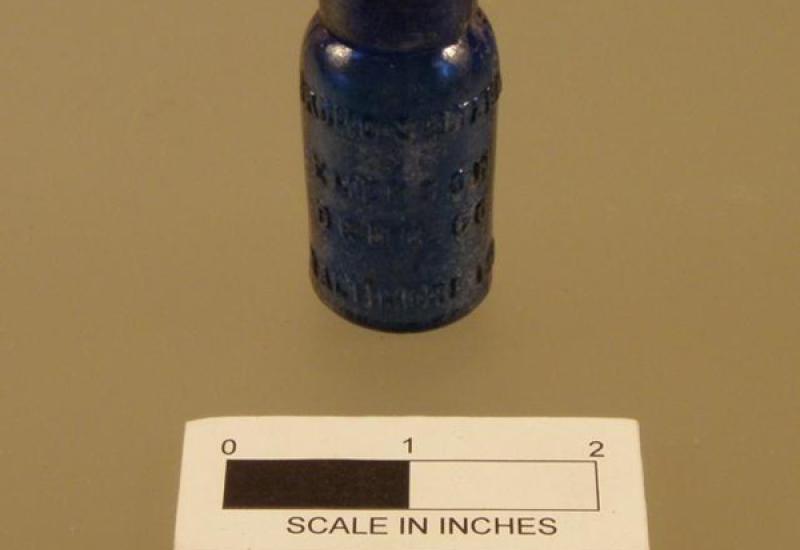
Emerson's Bromo-Seltzer
Isaac E. Emerson had trademarked Bromo-Seltzer by 1889 in Baltimore. This bottle type was manufactured by Hazel-Atlas until 1907. Bromo-Seltzer was used to cure headaches and to calm the nerves and was a popular product through the 1950s. This bottle was recovered from the former Risdon Iron Works.
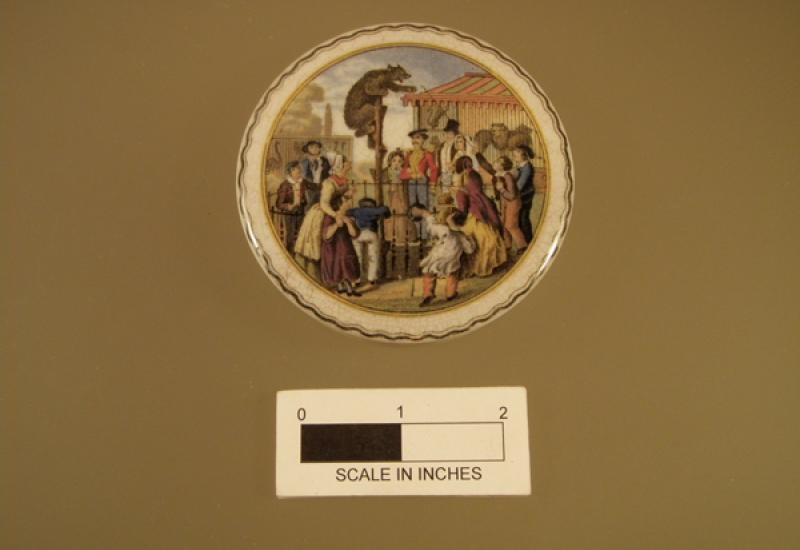
Apothecary Jars & Lids
These types of jars were commonly used in 19th-century homes in San Francisco. They were used for cosmetics and hygiene products of all types including toothpastes, shaving creams, cold creams, hair pomades, and ointments. The more elaborately decorated jars were sometimes reused for other purposes. These samples include a jar that contained one of the products offered by B. B. Thayer & Co., a San Francisco apothecary, as well as perfume from E. Roussel of 114 Chestnut Street in Philadelphia. Colorful lids like the one depicting a scene from a circus were produced after 1850 and were special-ordered by drug and cosmetic companies for their products. These samples were found in the backyards of 40 Natoma, 42 Natoma, and 45 Minna streets.
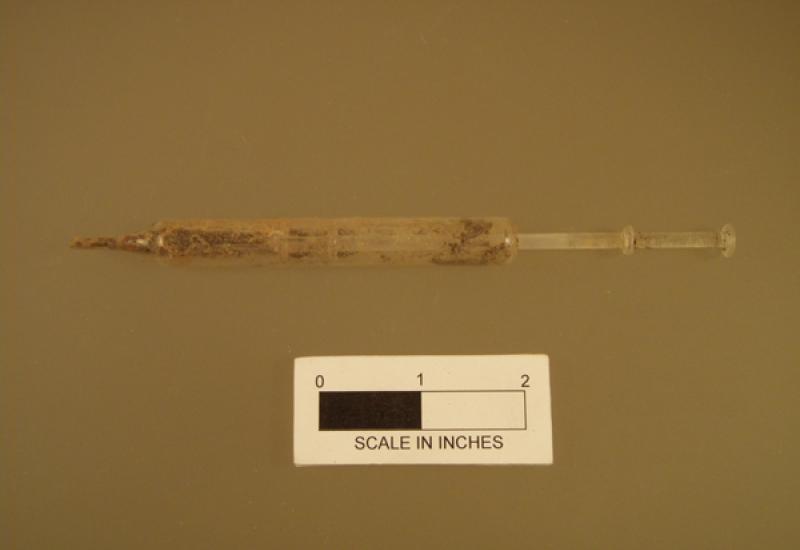
Irrigation Syringe
Glass irrigation syringes were used for a variety of purposes, including cleaning wounds and injuries, ear wax removal, cleaning between teeth and in the pockets left in the gums by lost teeth, and even treating bladder and urinary tract infections. These syringes were an easy way to remove dirt and debris without touching a wound. This example was recovered from the former Risdon Iron Works.
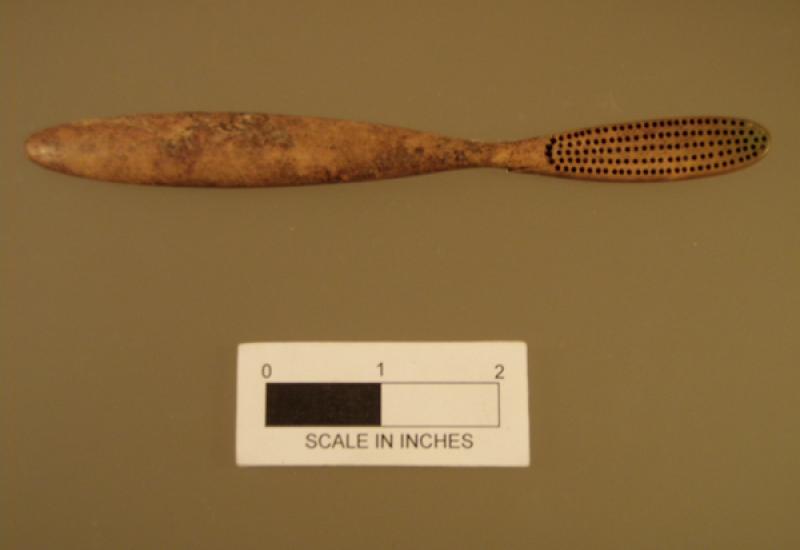
Bone Toothbrushes
Animal bone toothbrushes were commonly used during the second half of the 19th century. They ranged from plain to elaborately incised and decorated. These examples were found at 40 Natoma and 45 Minna streets.
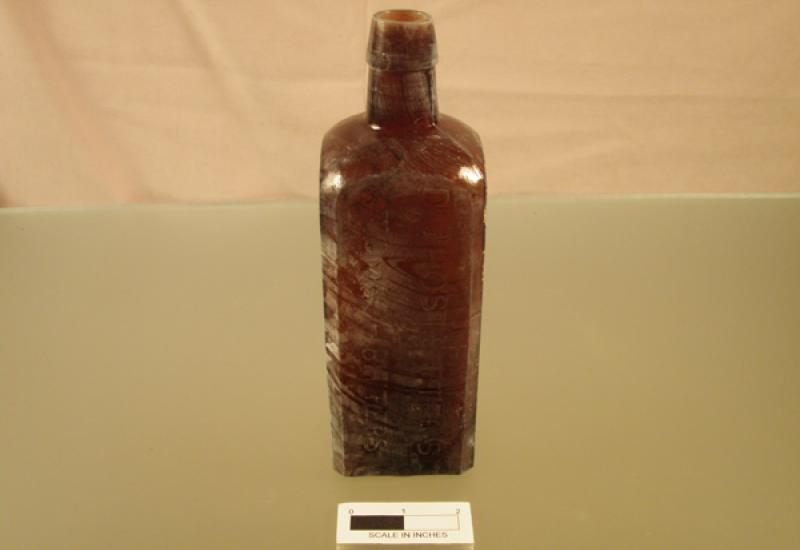
Stomach Bitters
Dr. J. Hostetter’s Stomach Bitters was made from 1853 to 1958 and contained up to 47% alcohol. The alcohol content in these ever-popular bitters was so high that in some saloons it was sold by the glass. This particular bottle was made between 1862 and 1871. It was found in the backyard of 45 Minna Street.
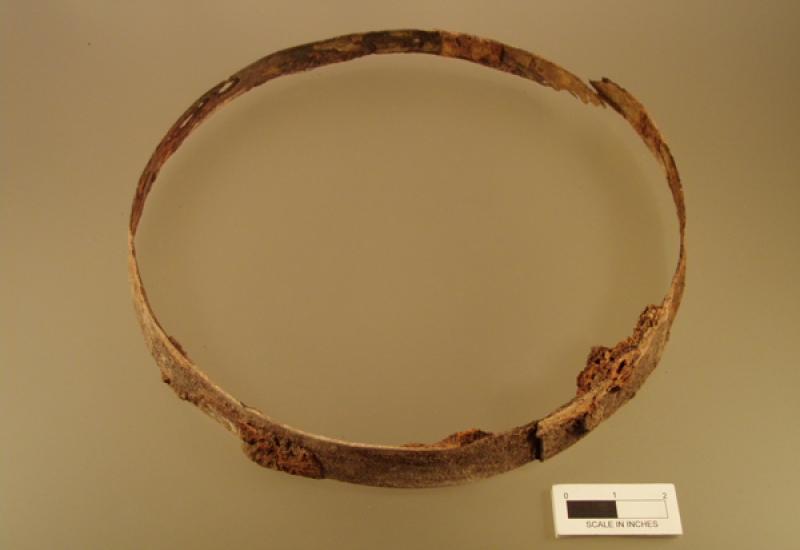
Barrel Strap
Barrel straps are a common component of archaeological assemblages in San Francisco, since many households used easily available barrels to store a variety of items in their rear yards. This barrel strap was recovered from 42 Natoma Street.
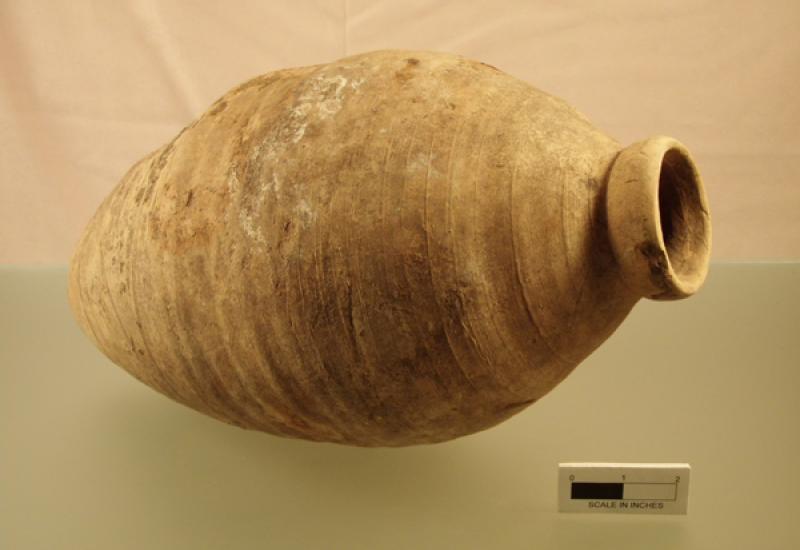
Storage Vessel
This unglazed earthenware vessel may have been used to store a variety of products, including grain, specialty foods, or even water. This jar was found in the backyard of 40 Natoma Street.
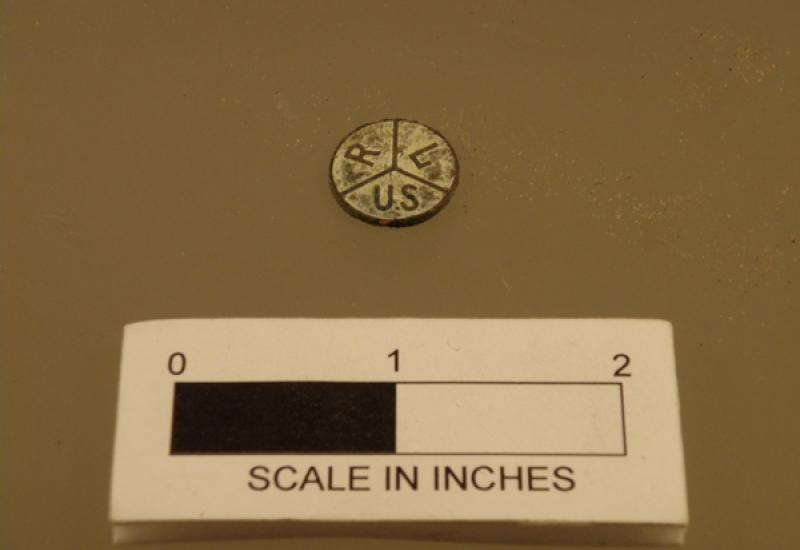
Button
This copper uniform button was recovered from the backyard of 41 Minna Street.
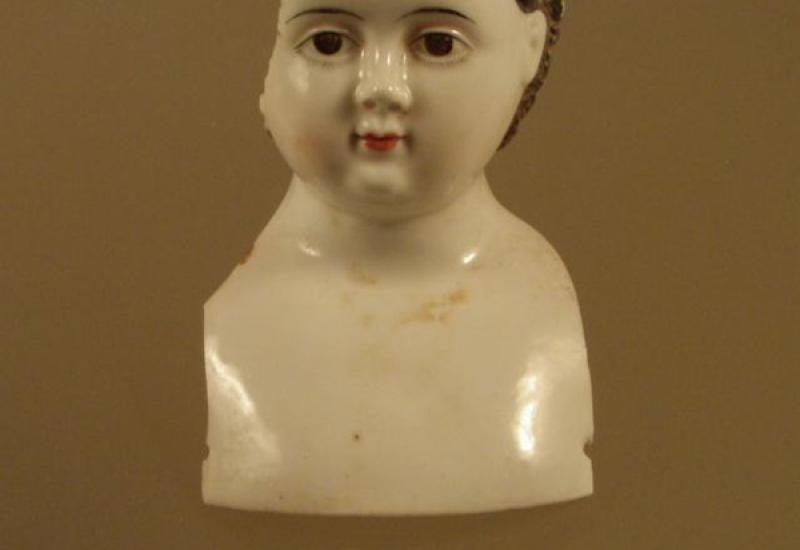
Porcelain Dolls
These hand-painted porcelain dolls were jointed, and their limbs and head were joined to a cloth, leather or ceramic body by stitching, wiring or elastic banding. The dolls’ hairstyles reflect the changing fashions of the 19th century. These dolls were likely made between the 1840s and the 1880s and were found in the backyards of 40 Natoma and 45 Minna streets.
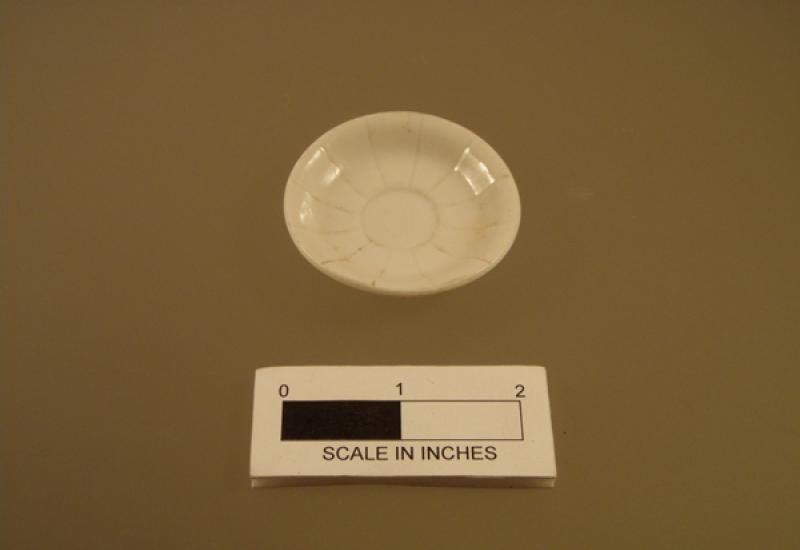
Children’s Tableware
This saucer, teacup, and sugar bowl were part of children’s tea sets. A whole set would usually have included a sugar bowl and cover, a teapot, several cups and saucers, and sometimes a creamer. In the late 19th century the price for these small sets was anywhere from 10 cents for the simple undecorated pieces to as much as $1.75 for the elegantly patterned pieces. While salesmen did go door to door with small scale versions of tableware to show potential customers, the small undecorated bowl was also likely used as a toy. These pieces were found in the backyards of 40 Natoma and 41, 43, and 45 Minna streets.
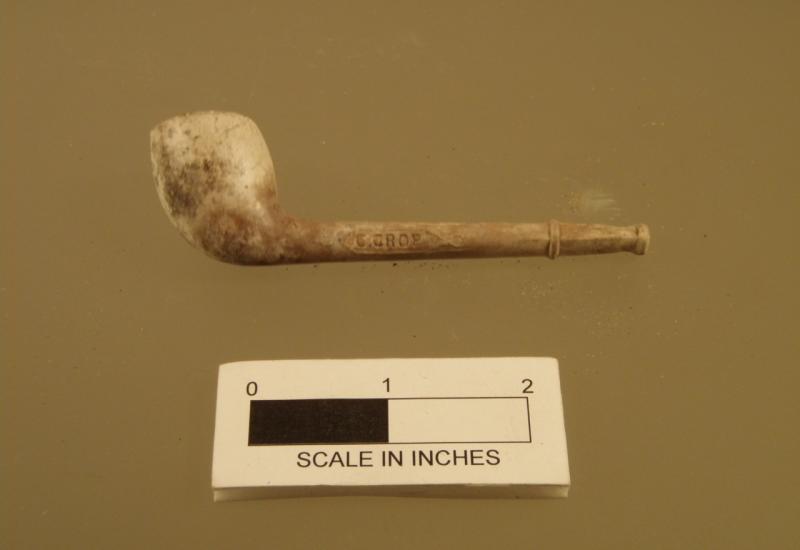
Clay Tobacco Pipes
Clay tobacco pipes were first manufactured in England in the late 1500s and by 1847 they were being made in the United States by Thomas Smith of New York. They continued to increase in popularity until World War I when cigarettes became the preferred method of smoking tobacco. These simple clay pipes were known as \"penny pipes\" because they were inexpensive and readily disposable when they were chipped or broken. Pipe makers regularly marked their pipes on either the bowl or stem of the pipe to identify themselves. These pipes include a sample from C. Crop of London, who began making pipes in the 1840s. His sons took over the business in the 1870s and continued manufacturing clay pipes until 1924. The maker of a second pipe, with two molded upside-down U\'s on the bowl, is unknown. A third sample has a repeating fluted design around the bowl. They were recovered from the backyards of 38 and 40 Natoma Street, as well as within the former Risdon Iron Works.
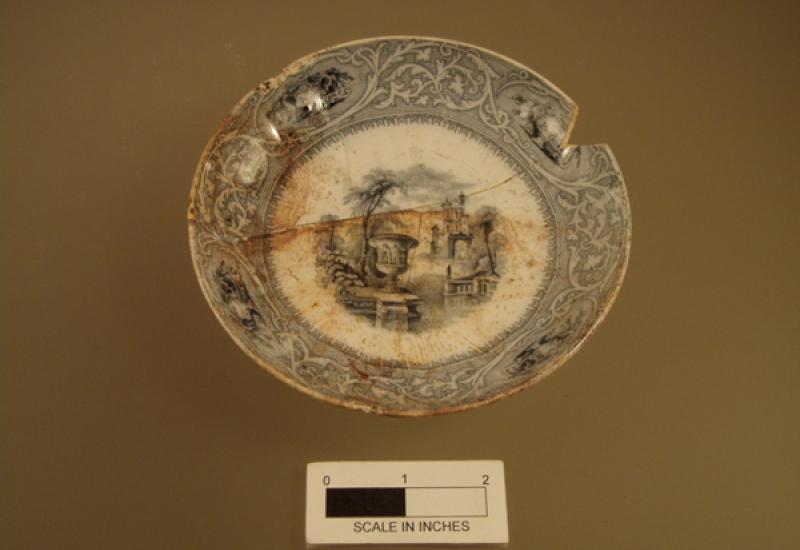
Saucer
This saucer is decorated in the ‘Medici’ transfer-print pattern. The registry mark printed on the back of the plate tells us this piece was made in July 1847 by Mellor, Venables & Co. in Burslem, England. It was recovered from 43 Minna Street.
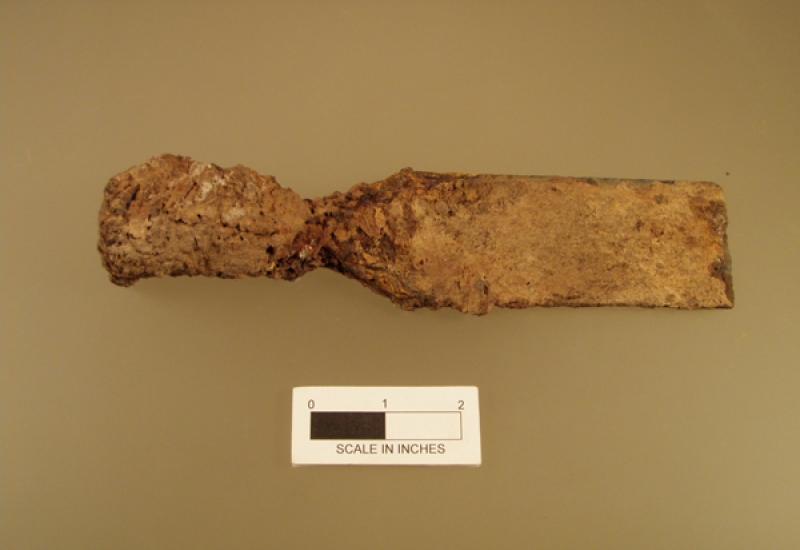
Iron Chisel
This iron chisel would have had either a rubber, wood or leather handle fitted around the shaft. It was recovered from the backyard of 40 Natoma Street and may have belonged to Michael Hart, a brick mason.
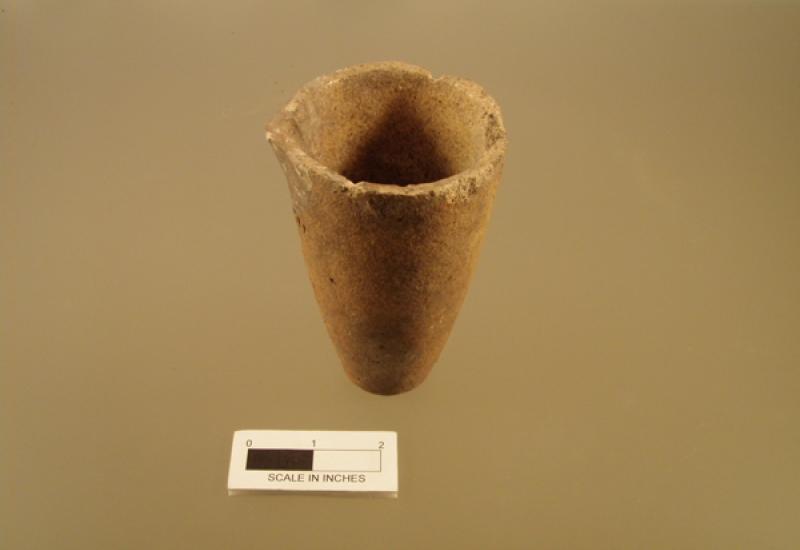
Crucibles
Crucibles were used for melting glass or metals, such as gold, and pouring the melted material into molds. This stoneware crucible was made by the Battersea Works of England. The works was opened in the 1850s by the Morgan brothers and continued to operate until 1956. This particular piece dates prior to 1881, when the company changed its name to the Morgan Crucible Company. It was recovered in the backyard of 40 Natoma Street. Although most crucibles are made of strong clay, iron crucibles like the one here were also used. This sample was recovered within the former Risdon Iron Works.
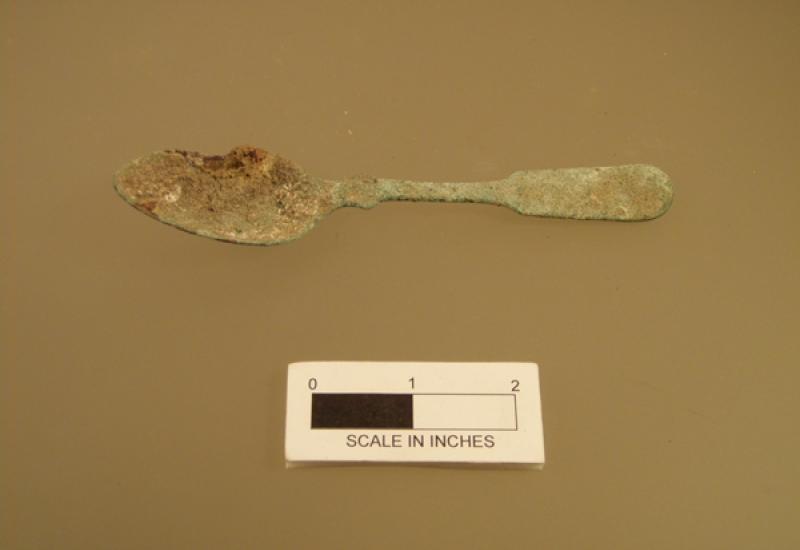
Spoon
This copper-plated spoon was recovered from 40 Natoma Street.
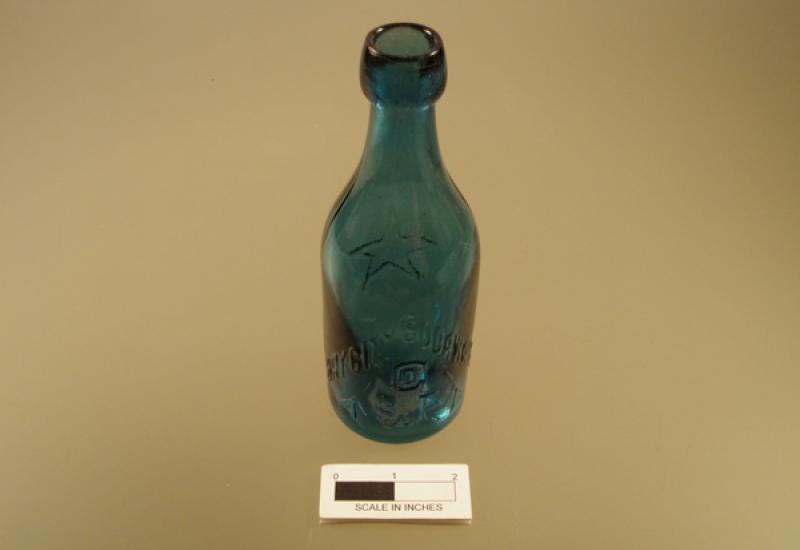
Soda Water Bottle
The Bay City Soda Water Co. opened in 1871 at 89 Stevenson Street in San Francisco and was in operation until 1913. James McEwen, the former proprietor of the California Soda Works Co., was the president of the company from 1871 to 1895. This style and color of bottle was produced between 1871 and 1874. It was found at 40 Natoma Street.
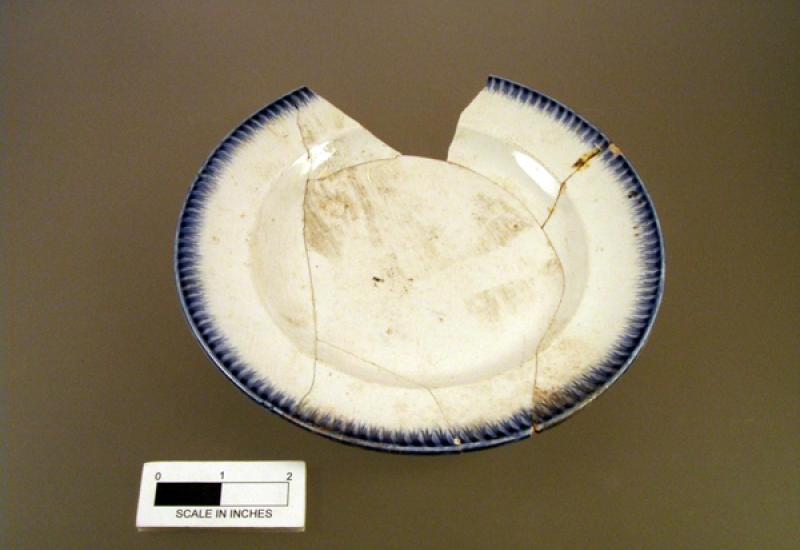
Dinner Plate
The blue shell edge decoration on this plate was popular with 19th century consumers. This particular variation was most popular between 1841 and 1857, although this plate could have been made almost anytime during the 19th century. It was recovered from the backyard of 40 Natoma Street.
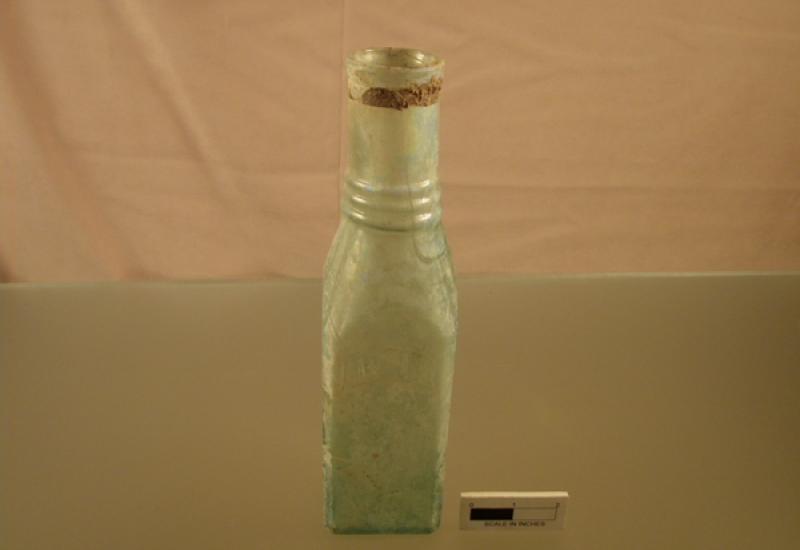
Pickle Bottle
This large cathedral-style bottle would have been used for food packing and may have been re-used for food storage. Although this type of bottle could have held a variety of condiments or preserved foods, this style was particularly popular for pickles. This bottle was likely made between 1850 and 1870 and was recovered from the backyard of 40 Natoma Street.
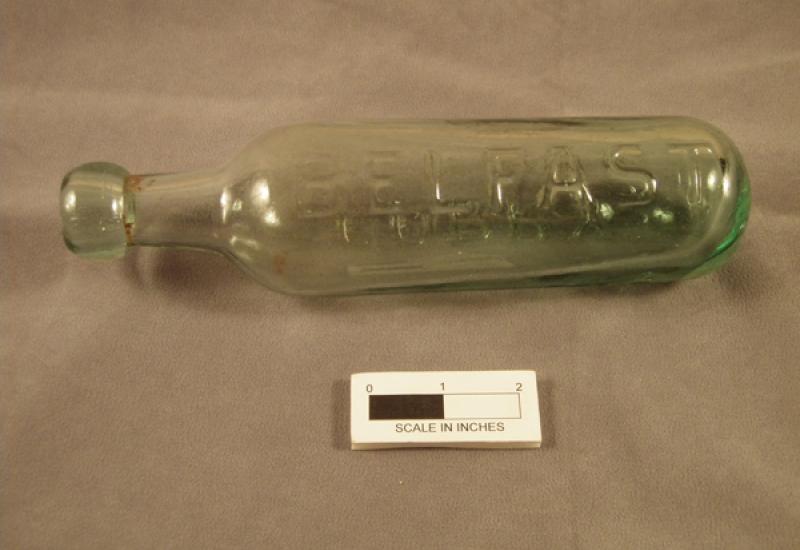
Torpedo Bottle
This bottle would have been filled with soda, mineral water, beer or ginger beer. The bottle was made with a round bottom ensuring that it would be laid on its side so that the contents would keep the cork moist, and the bottle would stay sealed. This style of bottle was popular on sailing vessels since during long voyages the corks used with other bottles would dry out, causing the contents to leak. This bottle was embossed with the mark of the Corry company of Belfast. It was recovered from 40 Natoma Street.
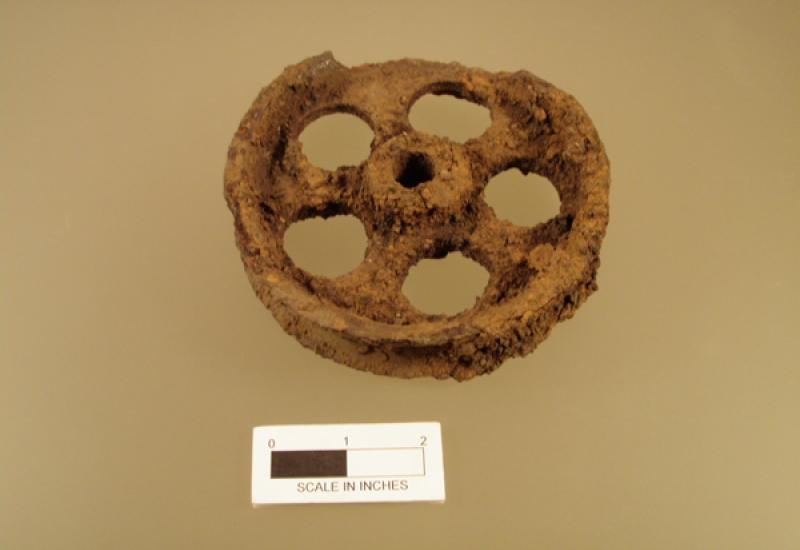
Iron Rope Pulley
Although the South of Market neighborhood was filled with heavy industries, they were not fully mechanized. Various pulleys and hoists would have allowed men to transfer heavy objects from one part of a manufactory to another. This pulley was recovered within the former Risdon Iron Works.
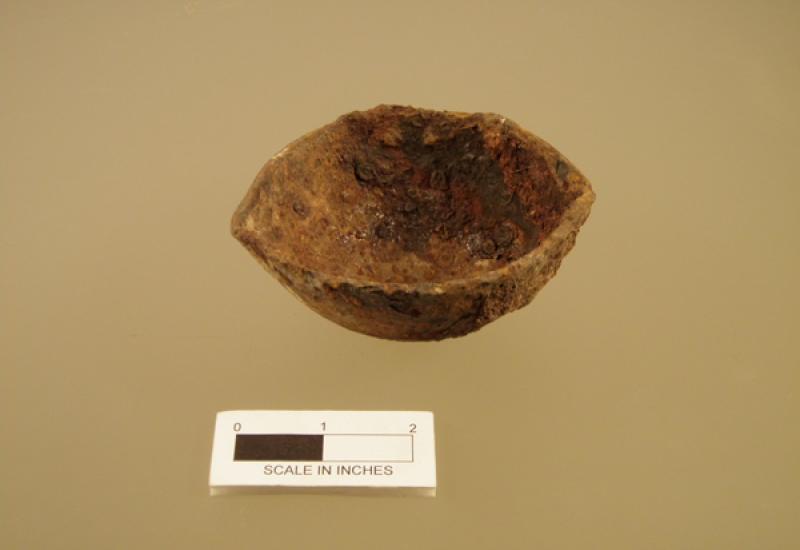
Crucibles
Crucibles were used for melting glass or metals, such as gold, and pouring the melted material into molds. This stoneware crucible was made by the Battersea Works of England. The works was opened in the 1850s by the Morgan brothers and continued to operate until 1956. This particular piece dates prior to 1881, when the company changed its name to the Morgan Crucible Company. It was recovered in the backyard of 40 Natoma Street. Although most crucibles are made of strong clay, iron crucibles like the one here were also used. This sample was recovered within the former Risdon Iron Works.
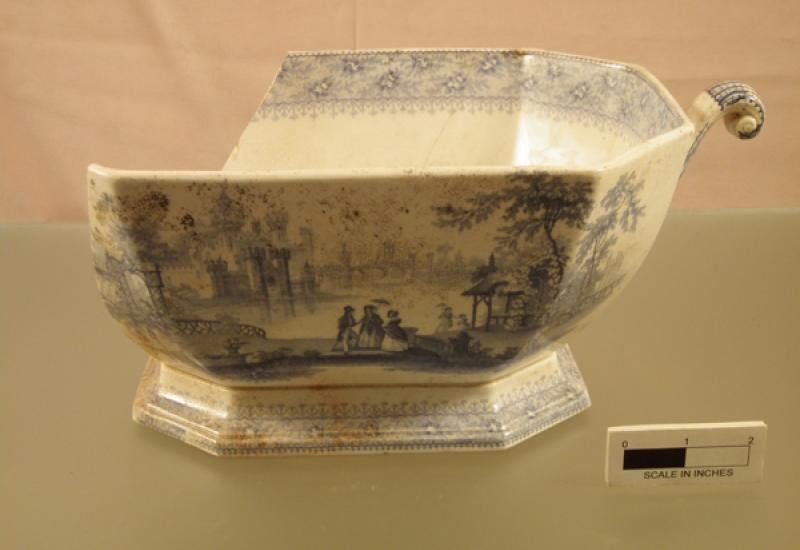
Soup Tureen
This large soup tureen has an exotic blue transfer-print pattern that features five people standing by the water with a castle in the background. Production of blue transfer-print decoration began in England ca. 1756, and it was meant to imitate the more expensive hand-painted Chinese porcelain wares. Popular patterns came in a variety of styles and often featured animals, floral designs, and maritime scenes. This piece was found at 40 Natoma Street.
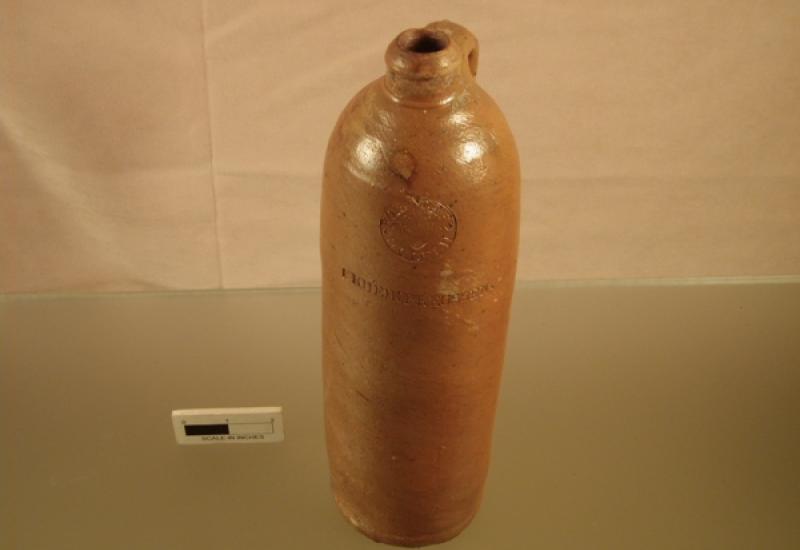
Mineral Water Bottle
This stoneware jug originally contained mineral water imported from Germany, although these sturdy bottles would have been re-used and filled with a variety of beverages. This bottle was found at 40 Natoma Street.
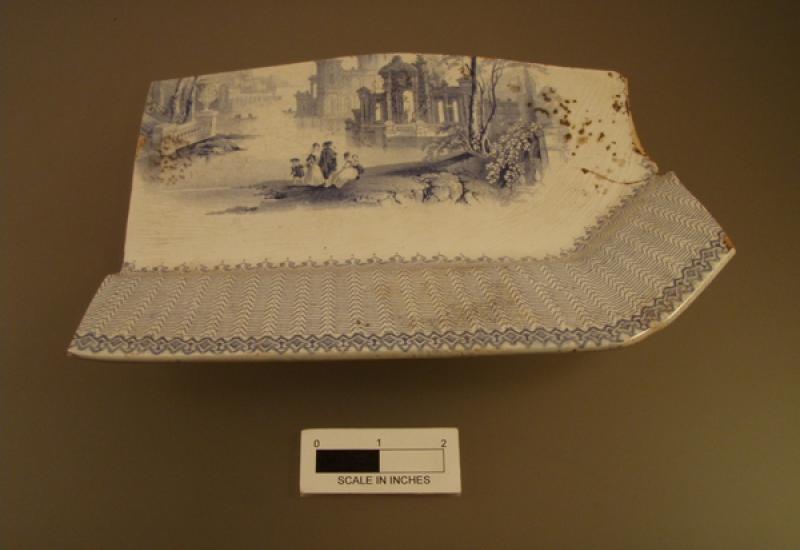
Serving Platter
This large serving platter is decorated with a blue transfer-print design called ‘Cassino,’ after the Italian village of that name. It was made by W. Adams & Sons of Staffordshire, England. William Adams began manufacturing wares as early as 1769 in England, although this particular pattern and mark were produced between 1819 and 1864. It was recovered from 40 Natoma Street.
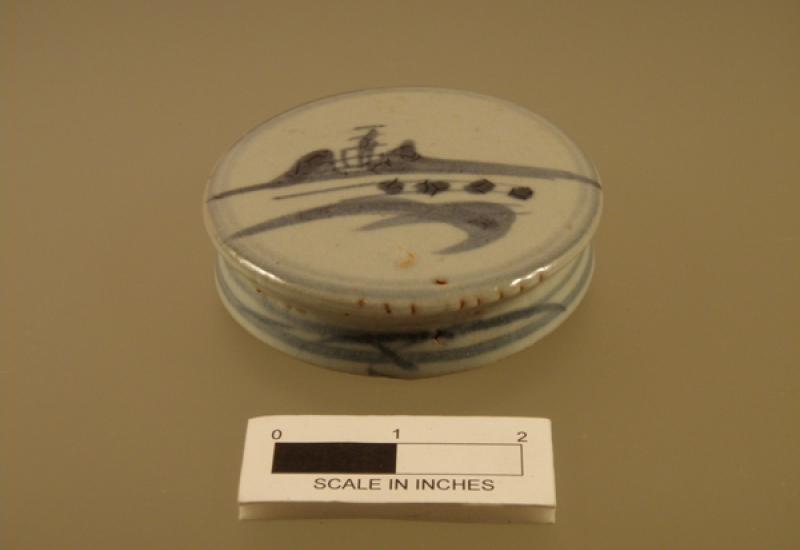
Food Storage Jar Lid
Wheel-thrown stoneware jars were commonly used by the Chinese community for storing foods such as preserved vegetables, pickled lemon, peanut oil or tea. This jar lid was found in the backyard of 40 Natoma Street.
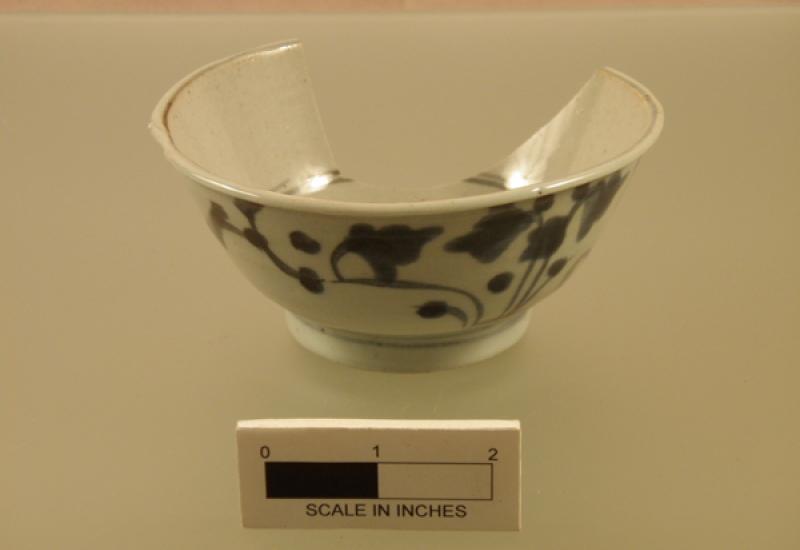
Rice Bowl
Stoneware bowl commonly used for rice or soup. This example has a hand-painted \"Three Circles and Dragonfly\" design on the exterior. These mass-produced bowls are commonly found on archaeological sites in San Francisco. This piece was found in the backyard of 47 Minna Street.
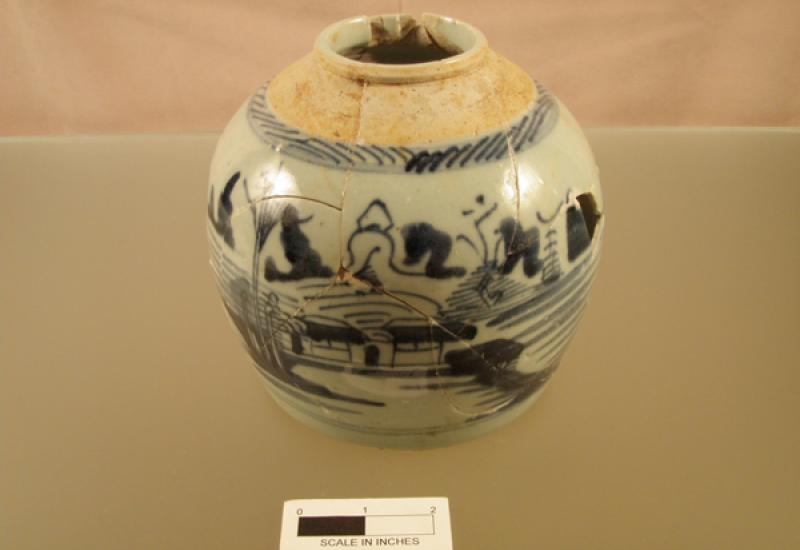
Ginger Jar
This stoneware jar would have been useful for short-term food storage. A loose porcelain lid would have been placed over the rim of the jar. These vessels were used to hold ginger root, crystallized ginger, and other specialty foods. This piece was found in the backyard of 40 Natoma Street.
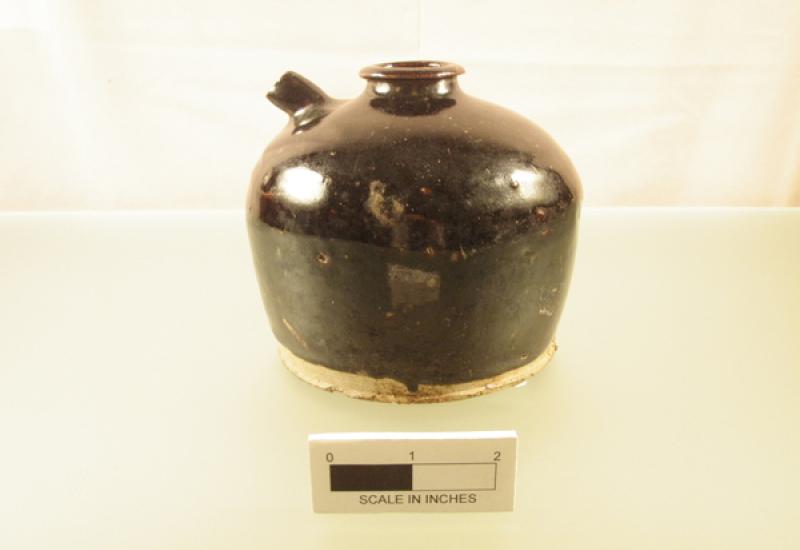
Soy Sauce Jar
This Chinese stoneware spouted jar was likely used for storing soy sauce, but may have held black vinegar, molasses, or similar products. The spout would have been closed with a wad of clay. This piece was found in the backyard of 47 Minna Street.
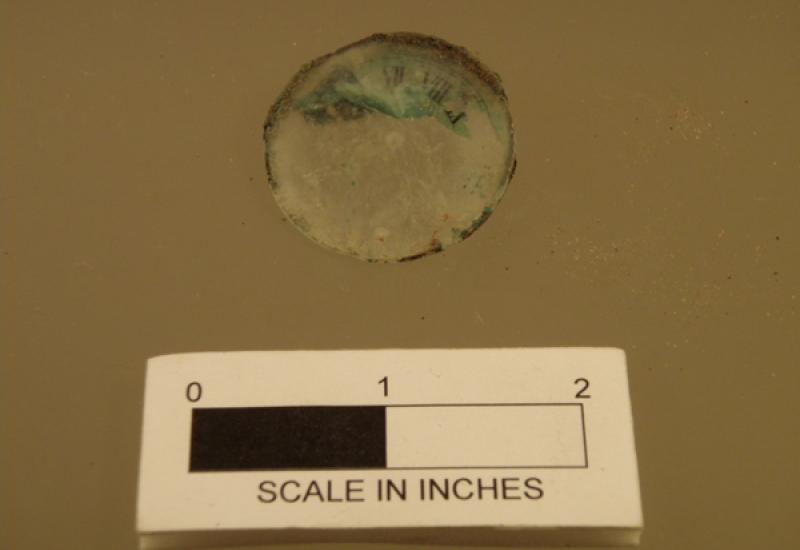
Pocket Watch
This is the remnant of a copper and glass pocket watch. Although pocket watches were quite common, it is relatively rare to find such an item in an archaeological context. This watch was found in the backyard of 40 Natoma Street.
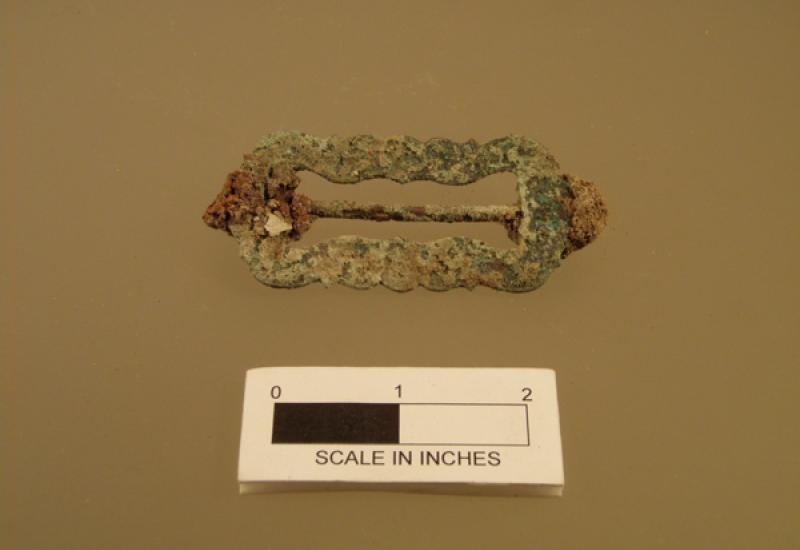
Decorative Belt Buckle
This decorative belt buckle was likely part of a woman\'s attire and would have complemented her fancier outfits. It was found at 40 Natoma Street.
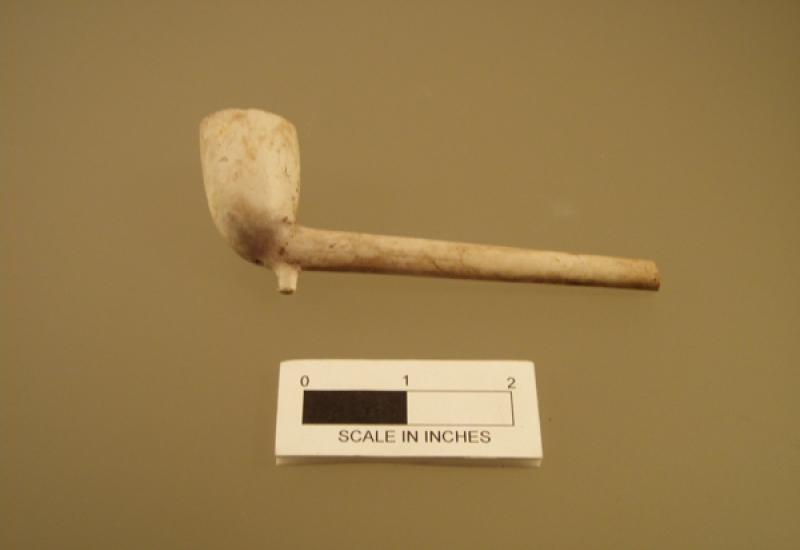
Clay Tobacco Pipes
Clay tobacco pipes were first manufactured in England in the late 1500s and by 1847 they were being made in the United States by Thomas Smith of New York. They continued to increase in popularity until World War I when cigarettes became the preferred method of smoking tobacco. These simple clay pipes were known as \"penny pipes\" because they were inexpensive and readily disposable when they were chipped or broken. Pipe makers regularly marked their pipes on either the bowl or stem of the pipe to identify themselves. These pipes include a sample from C. Crop of London, who began making pipes in the 1840s. His sons took over the business in the 1870s and continued manufacturing clay pipes until 1924. The maker of a second pipe, with two molded upside-down U\'s on the bowl, is unknown. A third sample has a repeating fluted design around the bowl. They were recovered from the backyards of 38 and 40 Natoma Street, as well as within the former Risdon Iron Works.
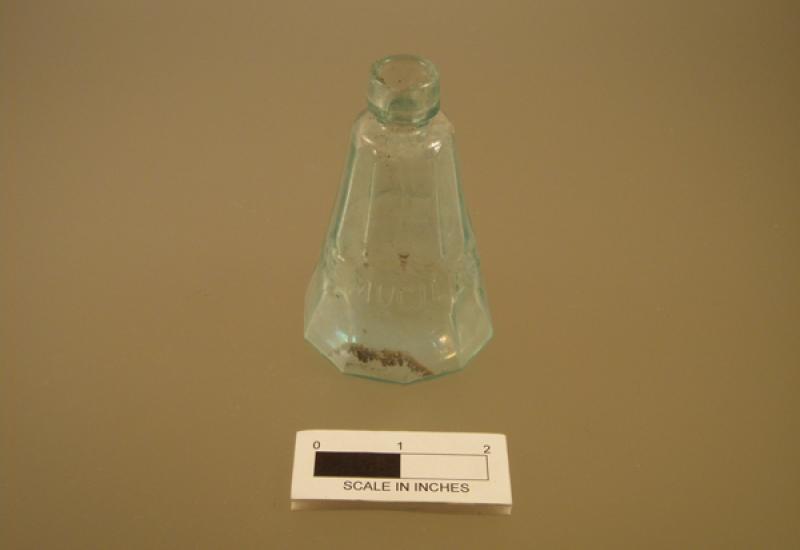
Glue Bottle
This conical bottle was a product of the Sponge Mucilage Company of New York, which was known for its innovative bottle design. The company incorporated a sponge into the neck of the bottle, allowing the glue to be easily applied. Manufacturers continue to use this design today. This bottle was found in the backyard of 38 Natoma Street.
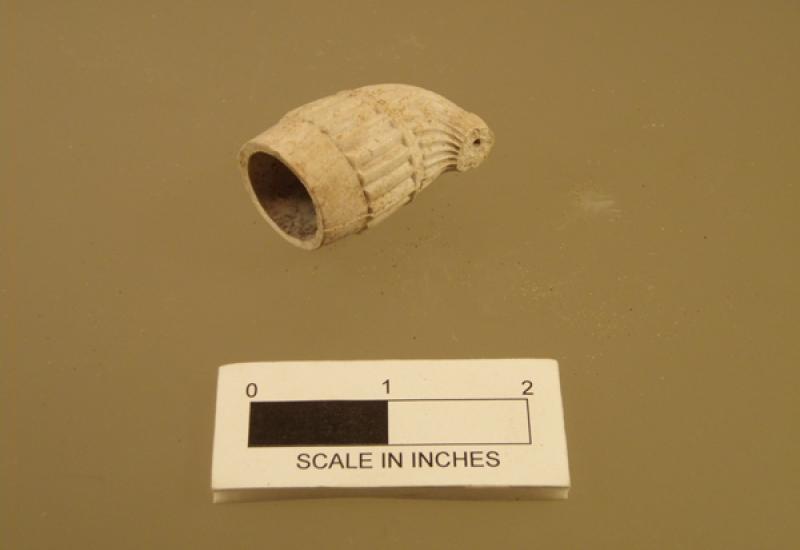
Clay Tobacco Pipes
Clay tobacco pipes were first manufactured in England in the late 1500s and by 1847 they were being made in the United States by Thomas Smith of New York. They continued to increase in popularity until World War I when cigarettes became the preferred method of smoking tobacco. These simple clay pipes were known as \"penny pipes\" because they were inexpensive and readily disposable when they were chipped or broken. Pipe makers regularly marked their pipes on either the bowl or stem of the pipe to identify themselves. These pipes include a sample from C. Crop of London, who began making pipes in the 1840s. His sons took over the business in the 1870s and continued manufacturing clay pipes until 1924. The maker of a second pipe, with two molded upside-down U\'s on the bowl, is unknown. A third sample has a repeating fluted design around the bowl. They were recovered from the backyards of 38 and 40 Natoma Street, as well as within the former Risdon Iron Works.
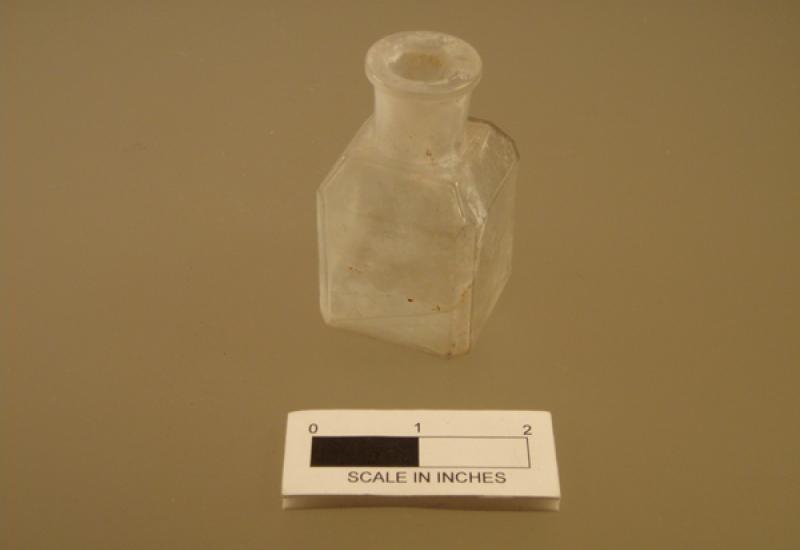
Ink Bottles
Glass ink bottles were first made in the U.S. ca. 1820. They came in a variety of styles, including the round, square, and fluted styles seen here. These small bottles would have been used for dipping a pen. During the late 19th century, ceramic ink bottles were made primarily in England and France. Although the piece you see here has no distinguishing maker\'s marks, this is most likely where this bottle was made. These were found in the backyards of 40 Natoma and 43 and 45 Minna streets.
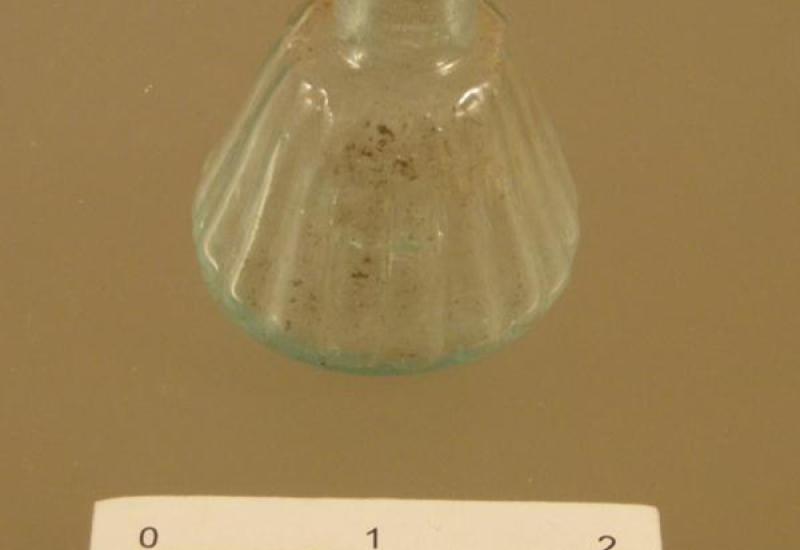
Ink Bottles
Glass ink bottles were first made in the U.S. ca. 1820. They came in a variety of styles, including the round, square, and fluted styles seen here. These small bottles would have been used for dipping a pen. During the late 19th century, ceramic ink bottles were made primarily in England and France. Although the piece you see here has no distinguishing maker\'s marks, this is most likely where this bottle was made. These were found in the backyards of 40 Natoma and 43 and 45 Minna streets.
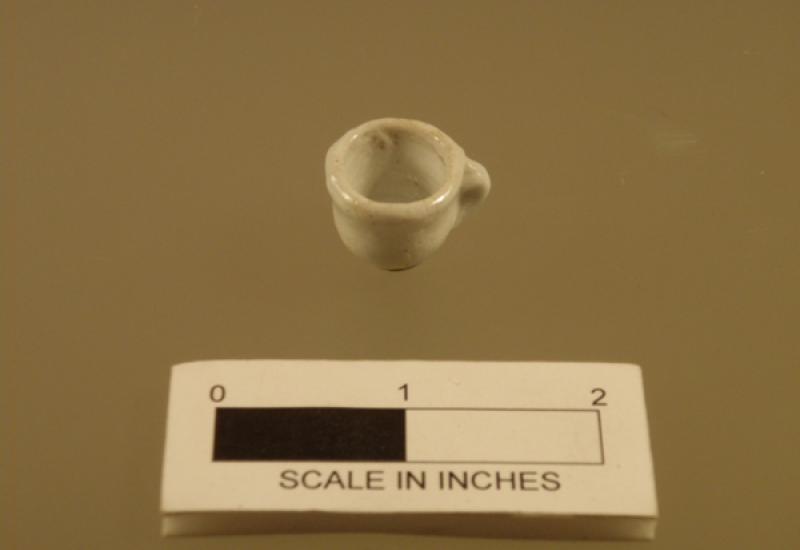
Children’s Tableware
This saucer, teacup, and sugar bowl were part of children’s tea sets. A whole set would usually have included a sugar bowl and cover, a teapot, several cups and saucers, and sometimes a creamer. In the late 19th century the price for these small sets was anywhere from 10 cents for the simple undecorated pieces to as much as $1.75 for the elegantly patterned pieces. While salesmen did go door to door with small scale versions of tableware to show potential customers, the small undecorated bowl was also likely used as a toy. These pieces were found in the backyards of 40 Natoma and 41, 43, and 45 Minna streets.
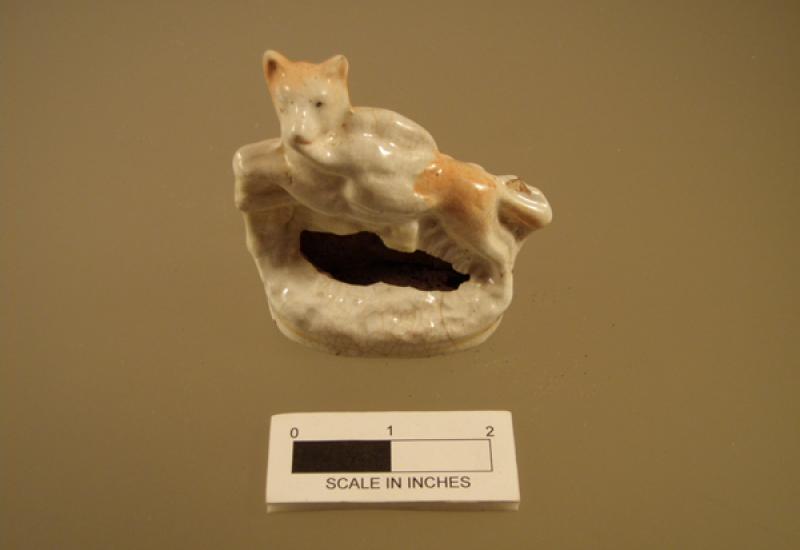
Decorative Figurine
Figurine of a dog with a bird in its mouth, recalling a scene of a man and his dog out hunting together. Many decorative pieces were recovered during the archaeological excavations, and they provide researchers with an idea of the lifestyle that residents aspired to. This particular piece was found in the backyard of 38 Natoma Street.
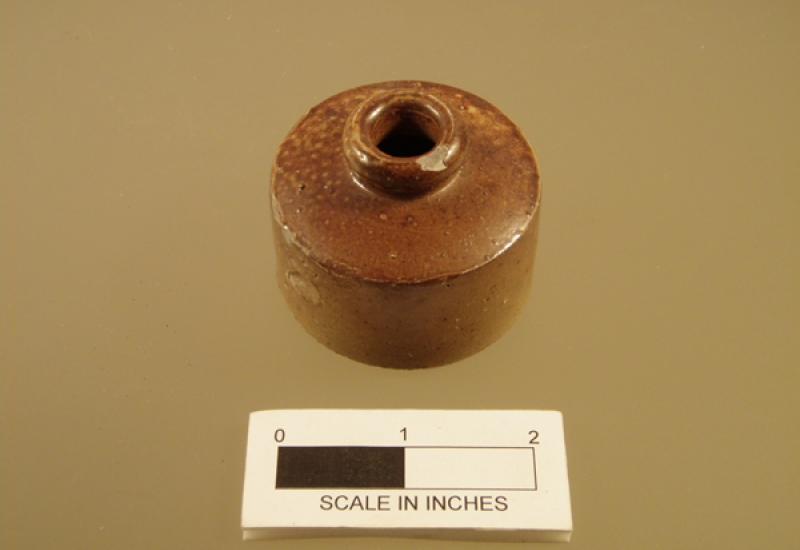
Ink Bottles
Glass ink bottles were first made in the U.S. ca. 1820. They came in a variety of styles, including the round, square, and fluted styles seen here. These small bottles would have been used for dipping a pen. During the late 19th century, ceramic ink bottles were made primarily in England and France. Although the piece you see here has no distinguishing maker\'s marks, this is most likely where this bottle was made. These were found in the backyards of 40 Natoma and 43 and 45 Minna streets.
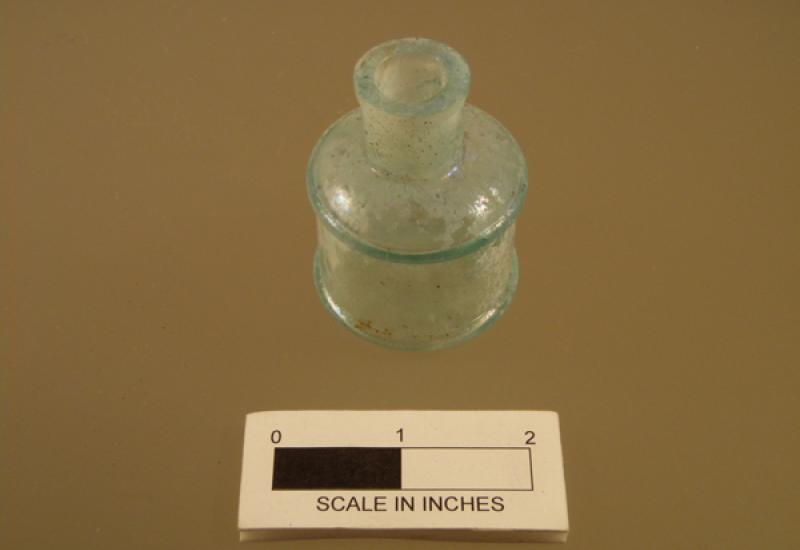
Ink Bottles
Glass ink bottles were first made in the U.S. ca. 1820. They came in a variety of styles, including the round, square, and fluted styles seen here. These small bottles would have been used for dipping a pen. During the late 19th century, ceramic ink bottles were made primarily in England and France. Although the piece you see here has no distinguishing maker\'s marks, this is most likely where this bottle was made. These were found in the backyards of 40 Natoma and 43 and 45 Minna streets.
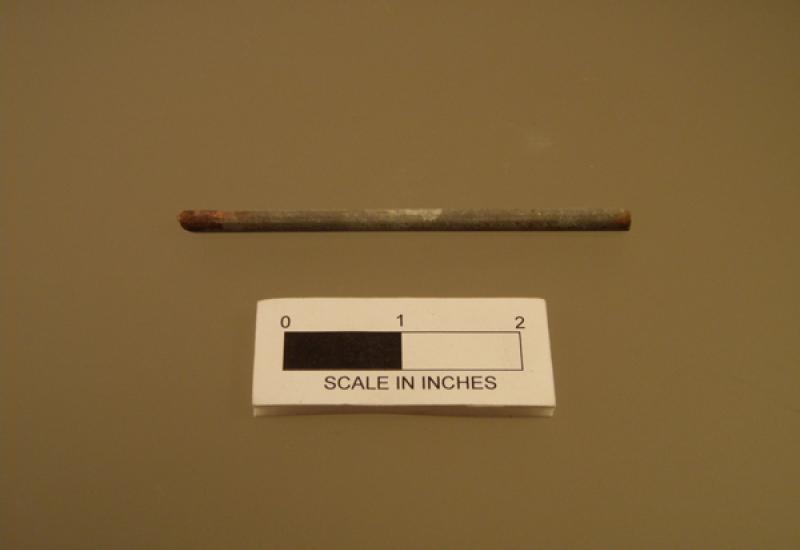
Slate Pencil
Slate pencils were used frequently by school children in the late 1800s and even in the early 1900s after lead pencils had been introduced. Slate pencils were a soft grade slate core that came unwrapped, wrapped in paper, or encased in wood. They were used to write on a harder grade slate tablet. This pencil was recovered from 45 Minna Street.
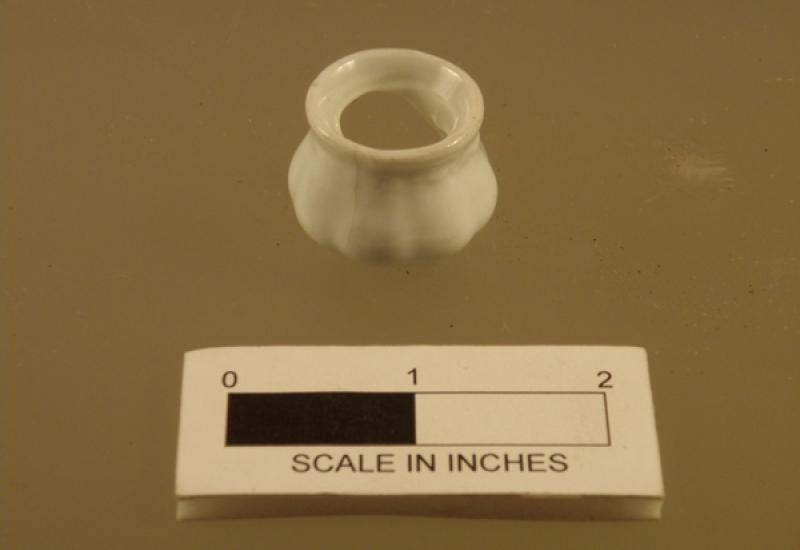
Children’s Tableware
This saucer, teacup, and sugar bowl were part of children’s tea sets. A whole set would usually have included a sugar bowl and cover, a teapot, several cups and saucers, and sometimes a creamer. In the late 19th century the price for these small sets was anywhere from 10 cents for the simple undecorated pieces to as much as $1.75 for the elegantly patterned pieces. While salesmen did go door to door with small scale versions of tableware to show potential customers, the small undecorated bowl was also likely used as a toy. These pieces were found in the backyards of 40 Natoma and 41, 43, and 45 Minna streets.
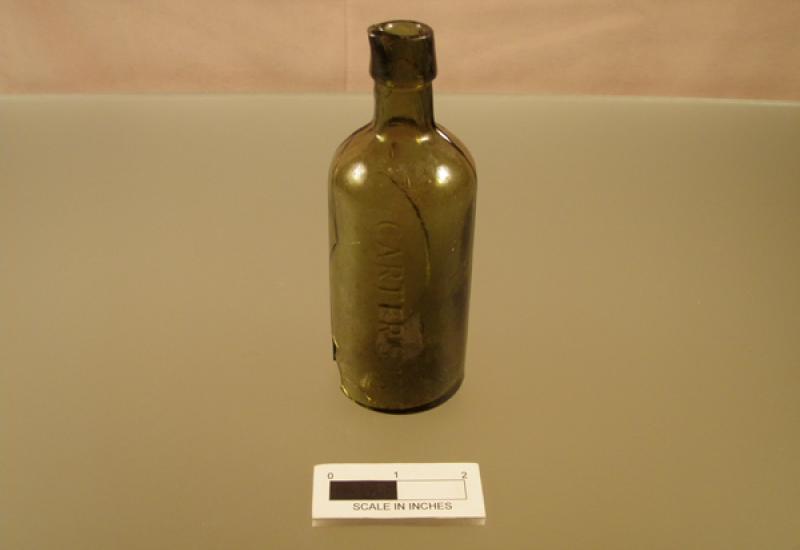
Glass Ink Storage Bottle
This large, olive-colored ink bottle held concentrated, ready-to-use ink for refilling ink wells or smaller vessels. Carter\'s Ink, the company that made this product, began selling ink wells and bottles in 1858 in Boston. The company remained in business for over 100 years and became one of the largest ink producers in the U.S. This bottle was found in the backyard of 45 Minna Street.
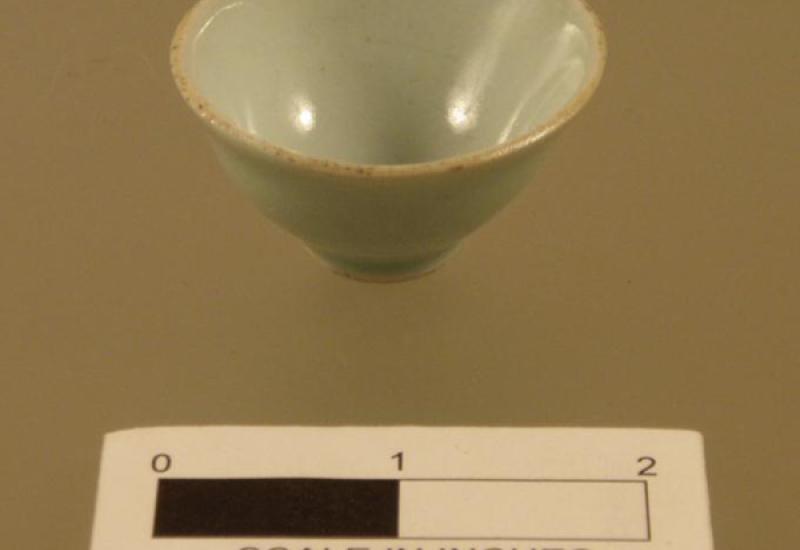
Teacup
Small Chinese porcelain teacup with a celadon glaze. This would have been one piece of a tea set with several small cups. Celadon-glazed Chinese wares came in a variety of forms, from cups to spoons, and were mass-produced. This piece was found in the backyard of 47 Minna Street.
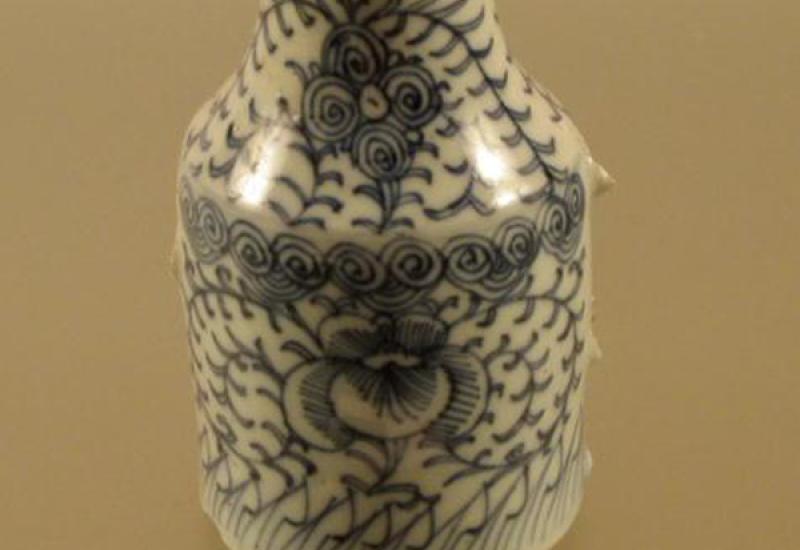
Wine Pot
Small cylindrical Chinese wine pot or warmer that has hand-painted decoration. Chinese wine pots were a part of the traditional life of the Chinese community in San Francisco. This piece was found in the backyard of 47 Minna Street.
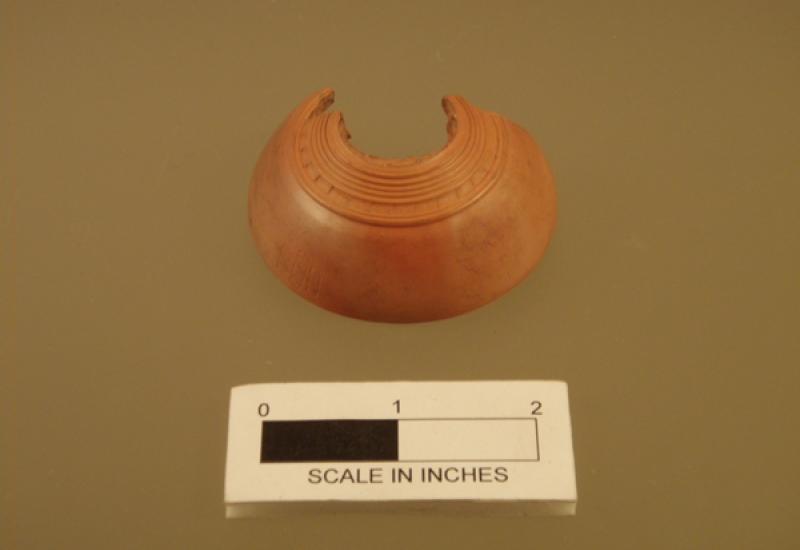
Opium Pipe
Chinese redware opium pipe bowl. Opium use in Chinese culture goes back a millennium; opium was first used for medicinal purposes in the 10th century. Opium use in America rose from only a few thousand chests of opium annually in the late 1700s to more than 80,000 chests by the late 1800s. Opium was widely used by both Chinese and European Americans for its medicinal benefits. This piece was found in the backyard of 47 Minna Street.
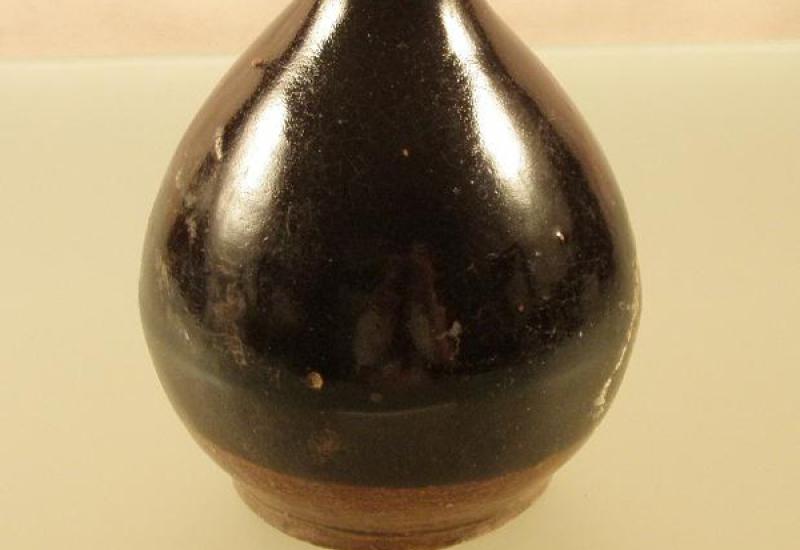
Rice Wine Bottle
Chinese stoneware rice wine bottle. These vessels would have typically held either rice wine or distilled spirits, such as Ng Ka Pi that had a 96 to 106 proof alcohol content. This piece was found in the backyard of 47 Minna Street.
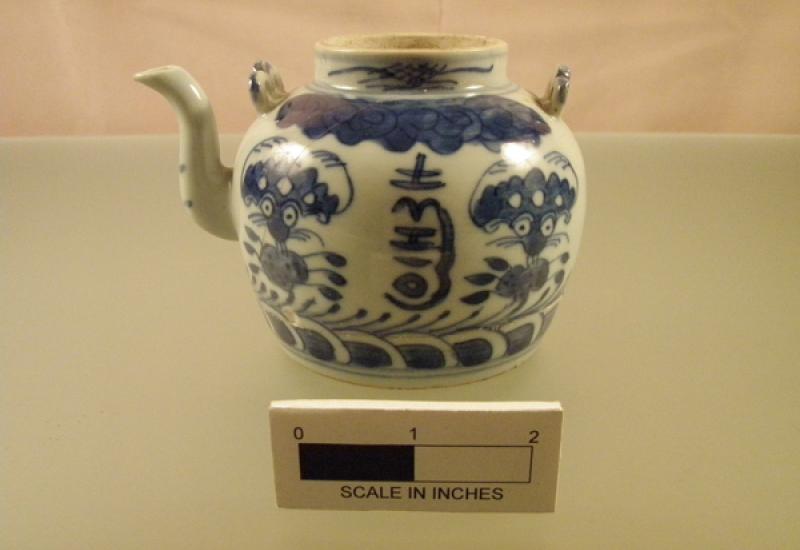
Teapot
This Chinese porcelain teapot was found in the backyard of 47 Minna Street. Elaborate, hand-painted designs were used even on everyday household items.
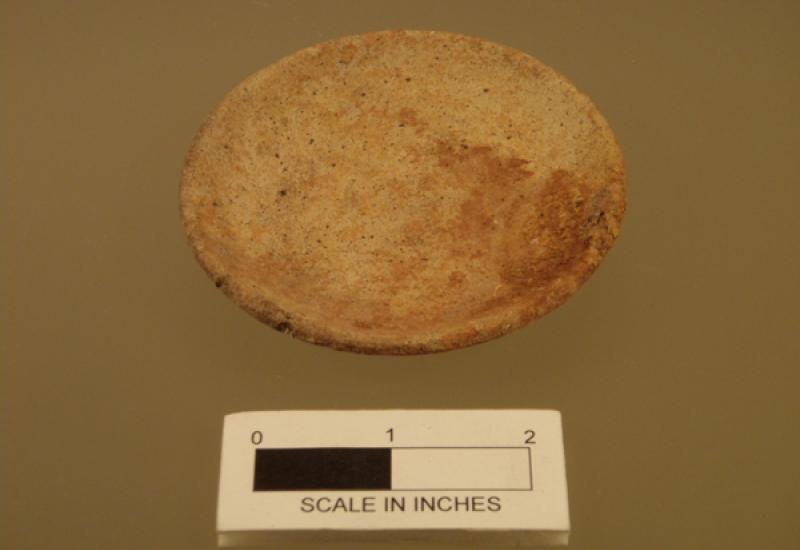
Food Storage Jar Lid
This earthenware lid would have fit atop a food storage jar and been sealed with clay for shipment. After shipment, the lids were thrown away and replaced with either a cloth or a wood stopper for use in the home. This piece was found in the backyard of 47 Minna Street.
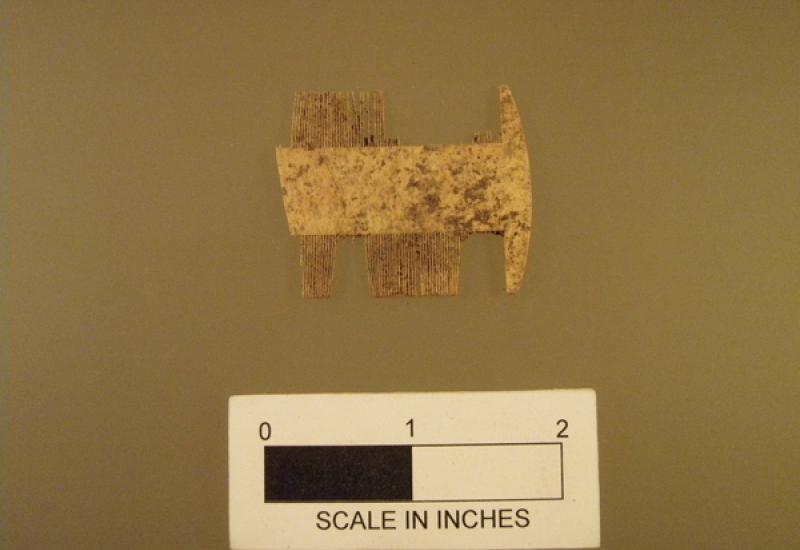
Comb
This comb is made of animal bone and was found in the backyard of 40 Natoma Street. This shape and style was very popular among the Chinese community during this time.
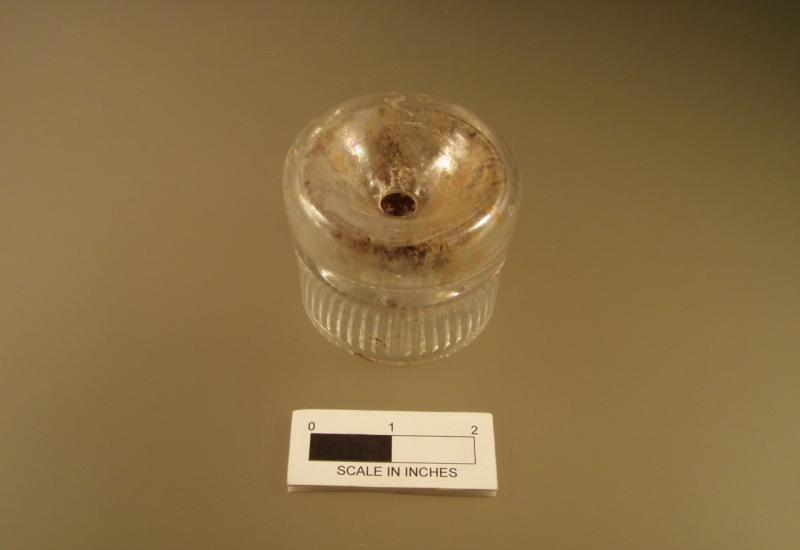
Glass Ink Well
Unlike more common disposable ink bottles, this ink well would have been a permanent fixture in any home. This style was patented by A.W. Brinkerhoff on May 7, 1872. A.W. Brinkerhoff was an inventor as well as a corn husker and he received two other patents in the late 1800s, one for the improvement of corn planters and the other for the improvement of a corn-husking device. This ink well was found at 40 Natoma Street.

